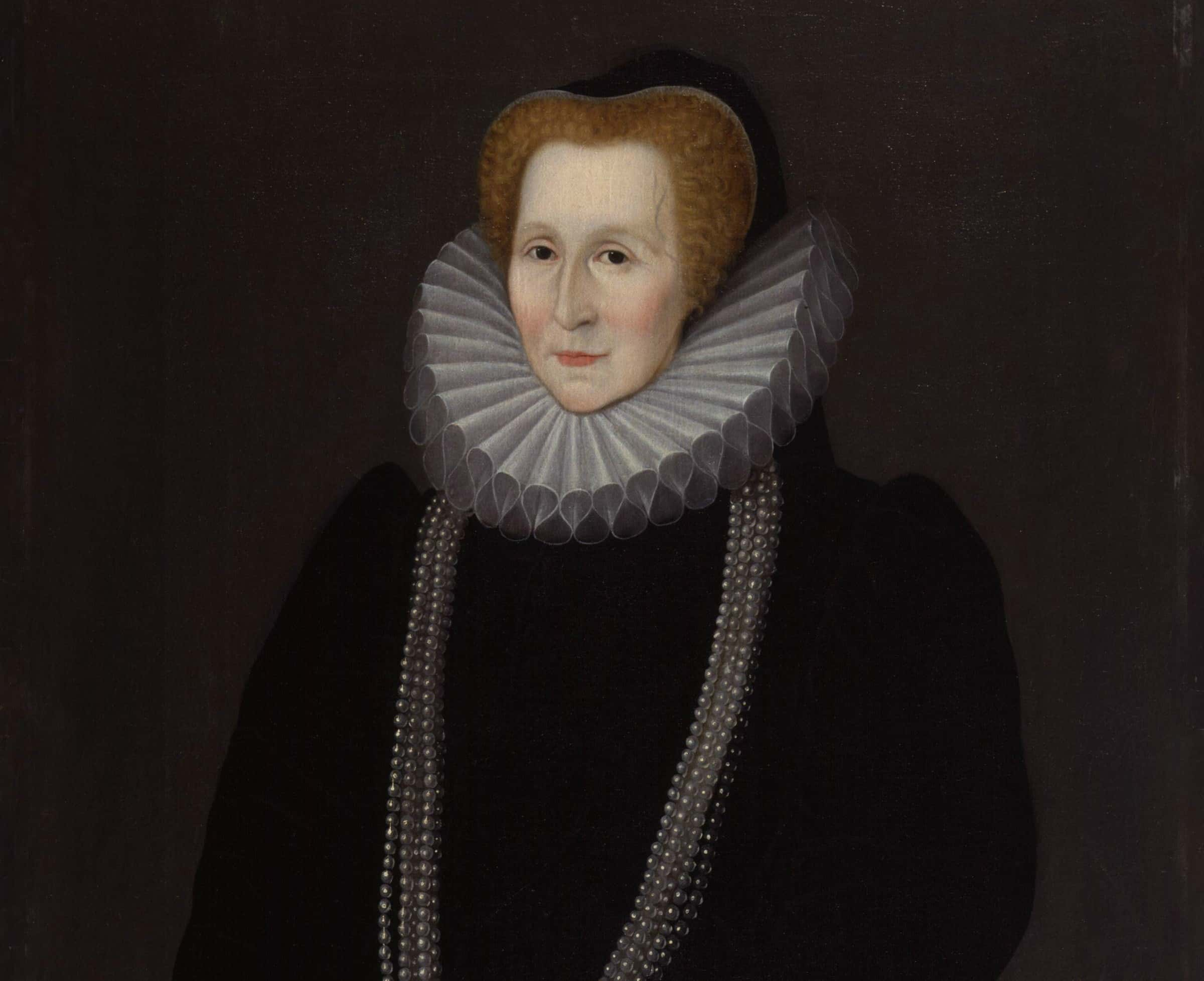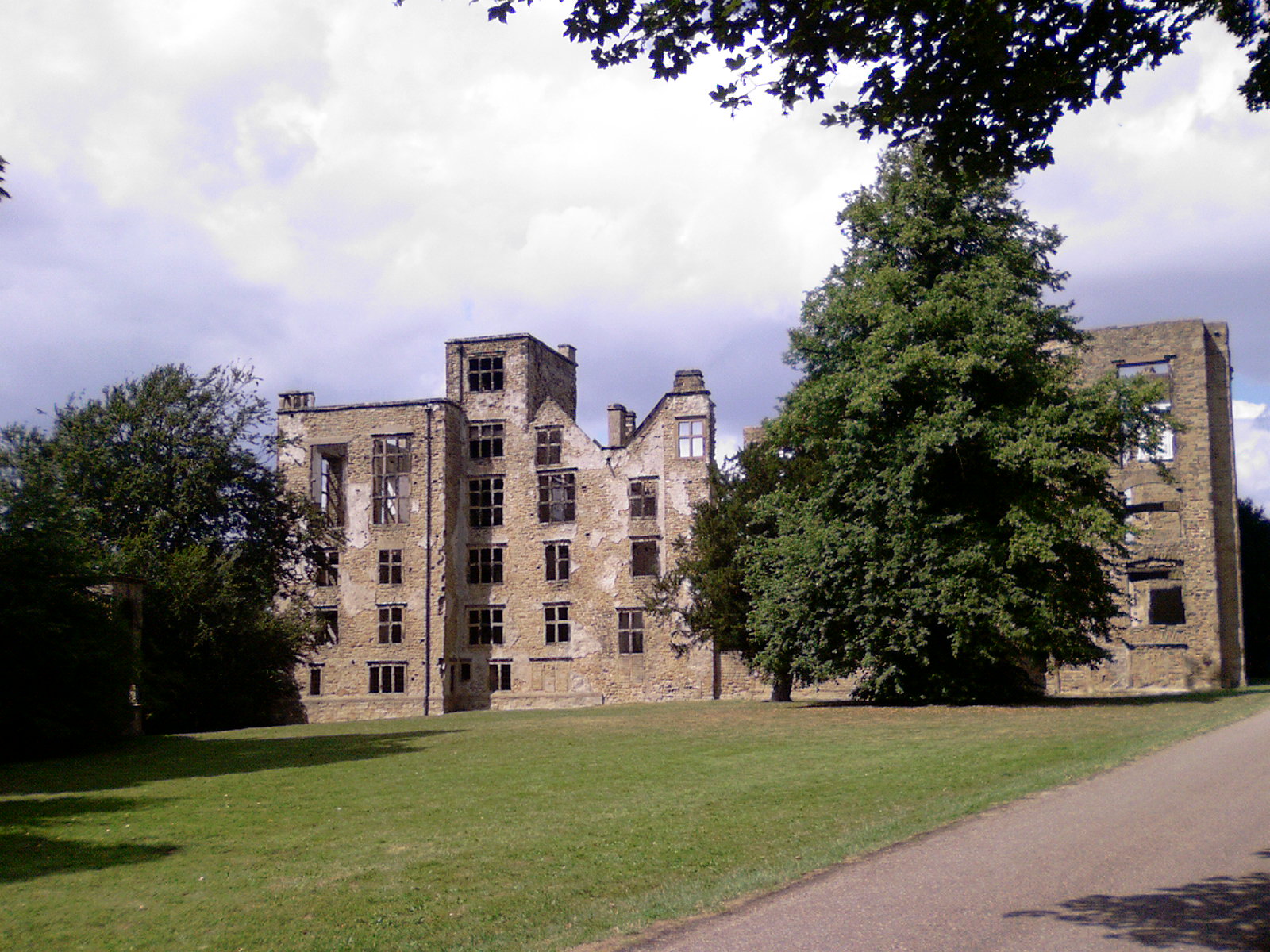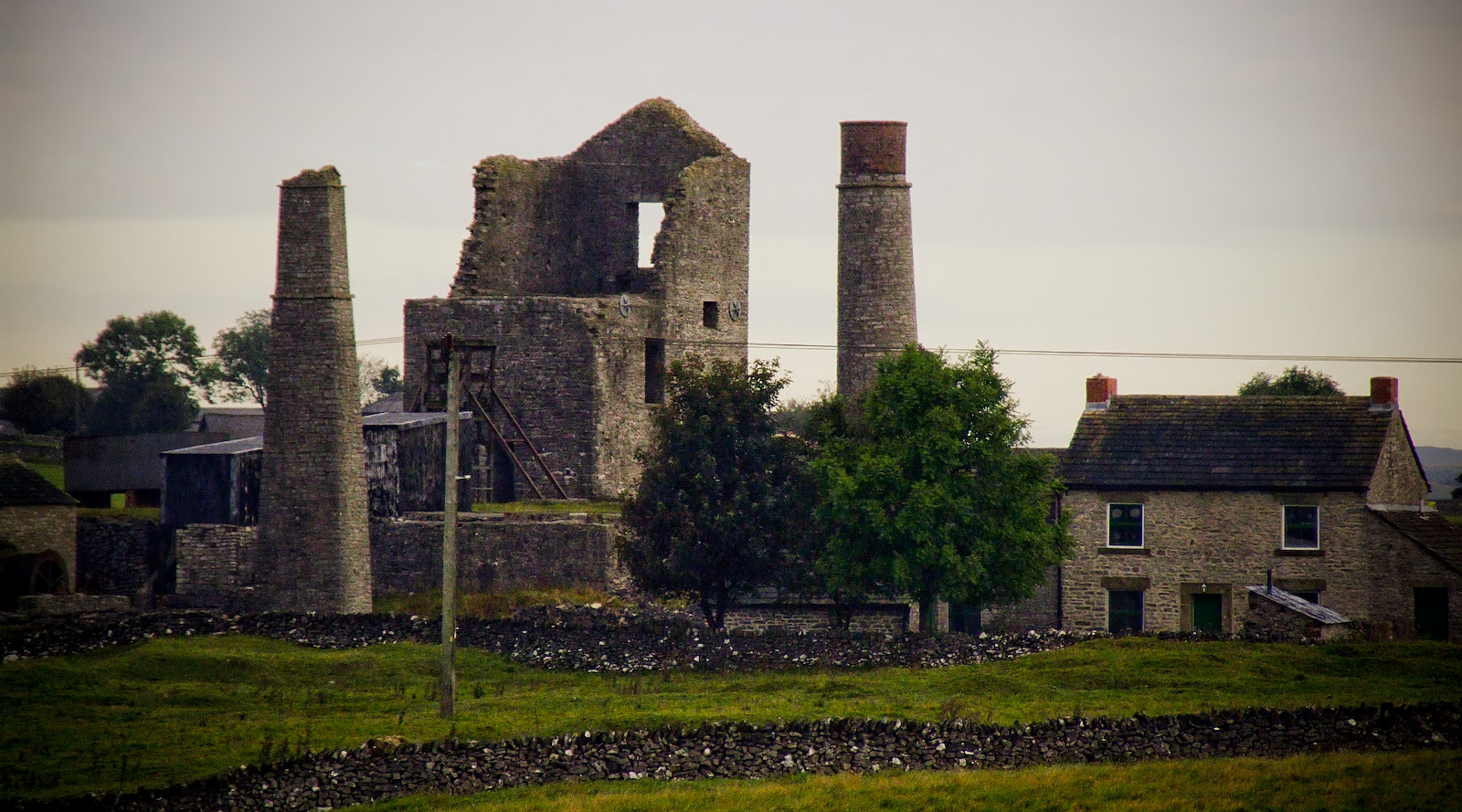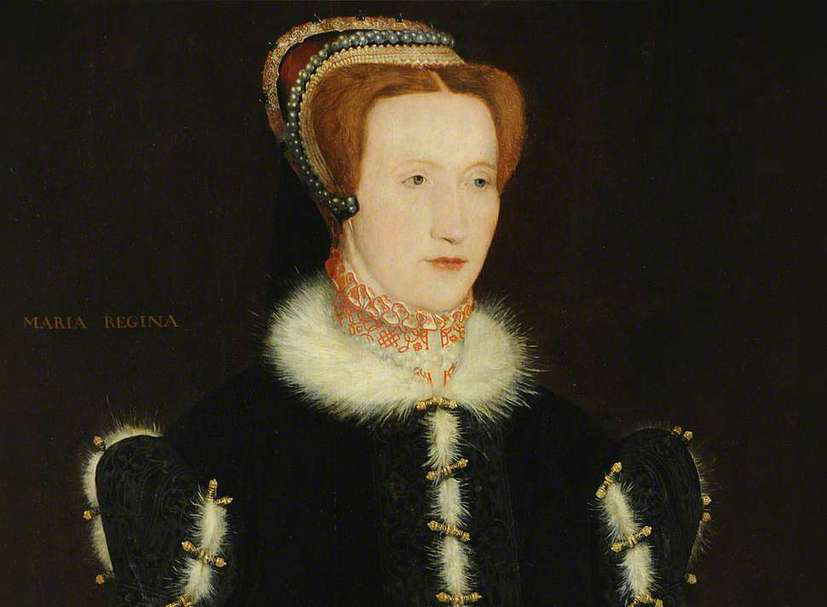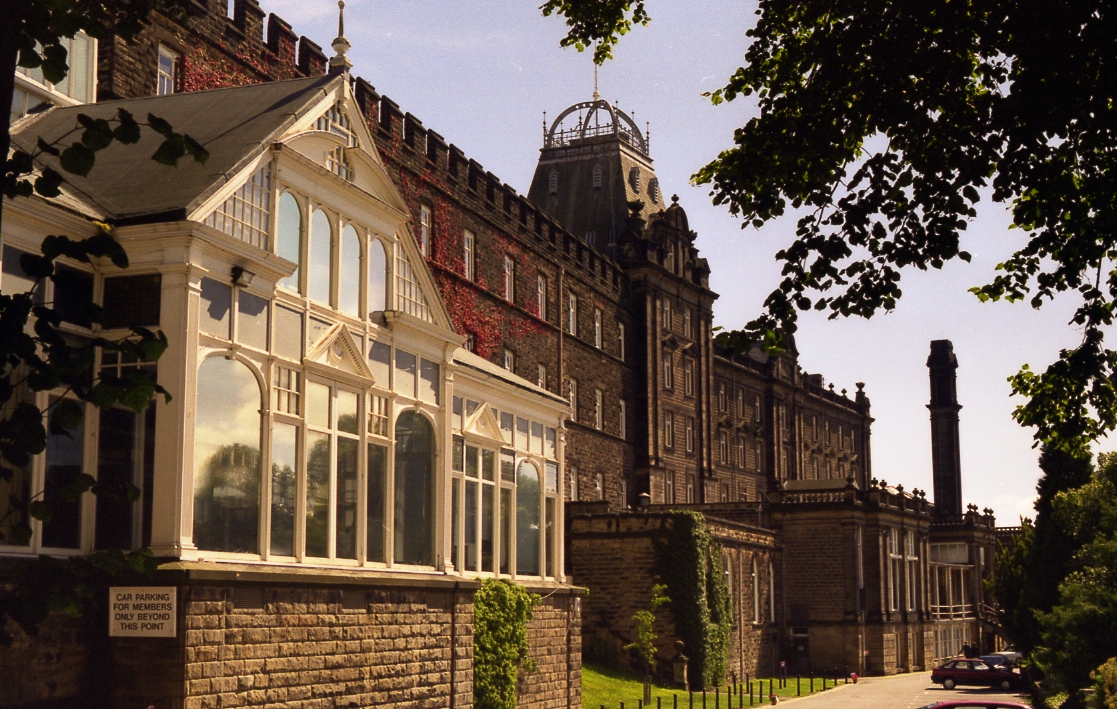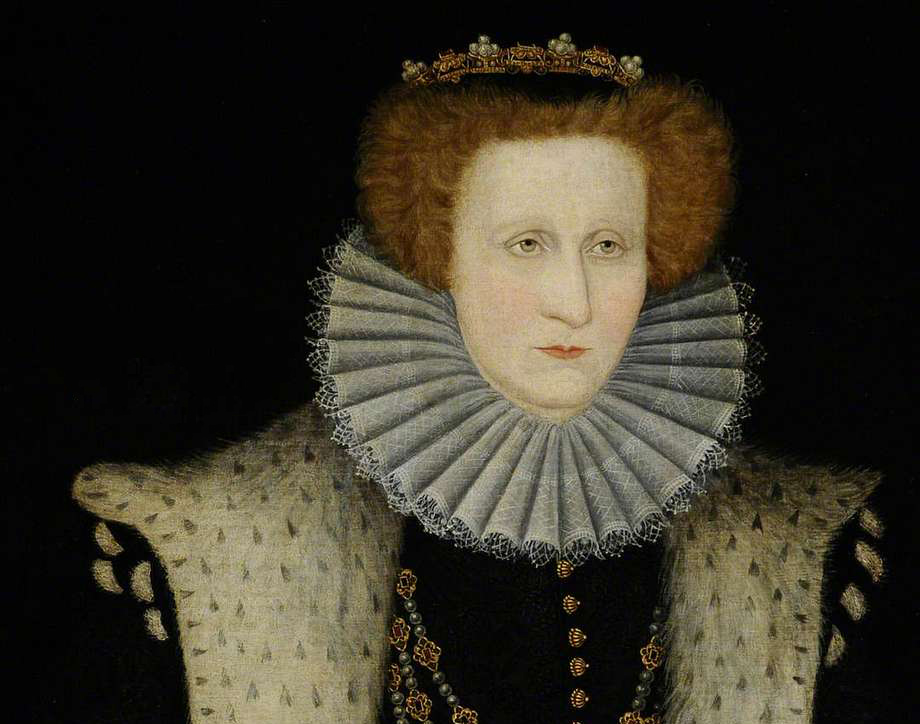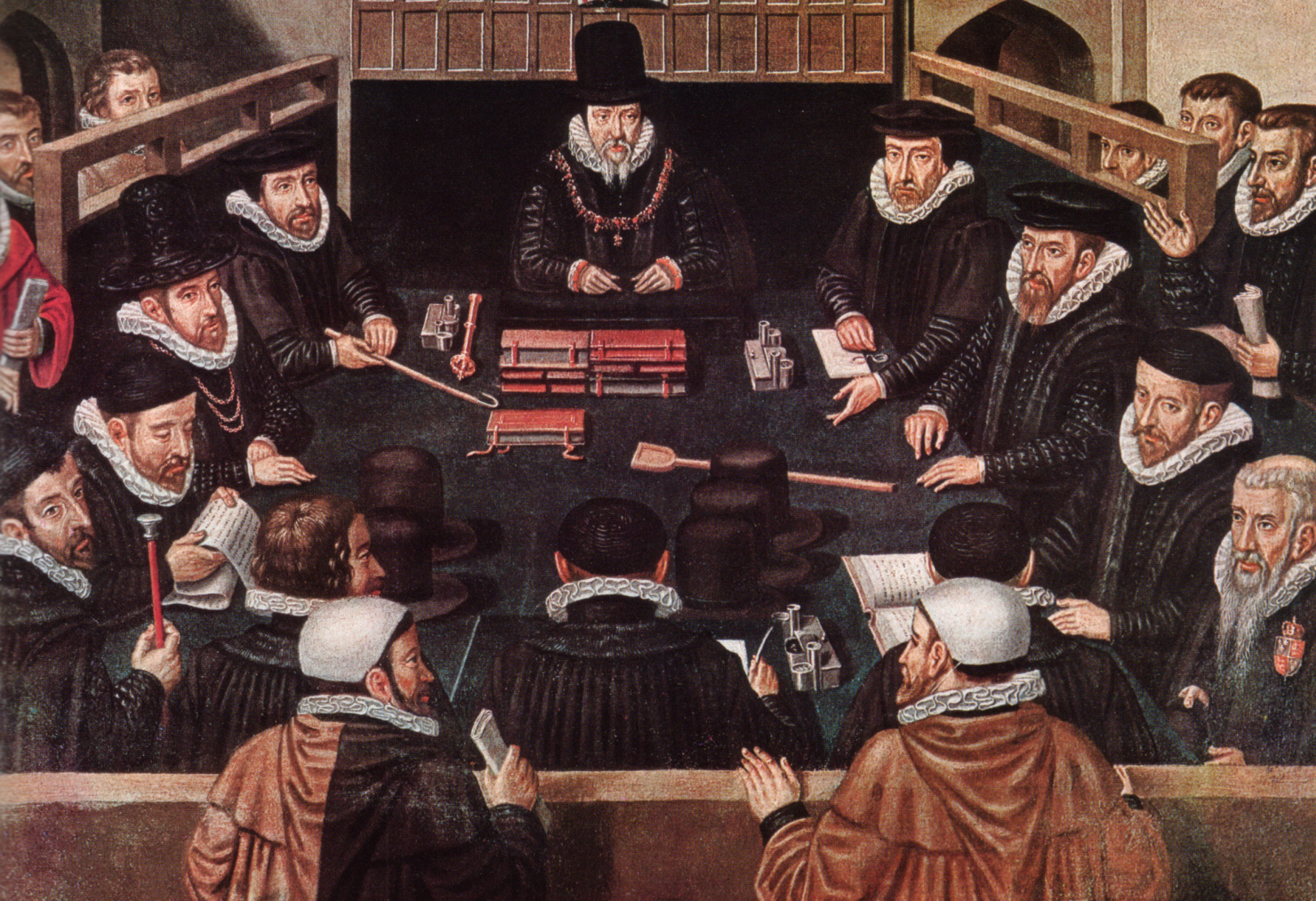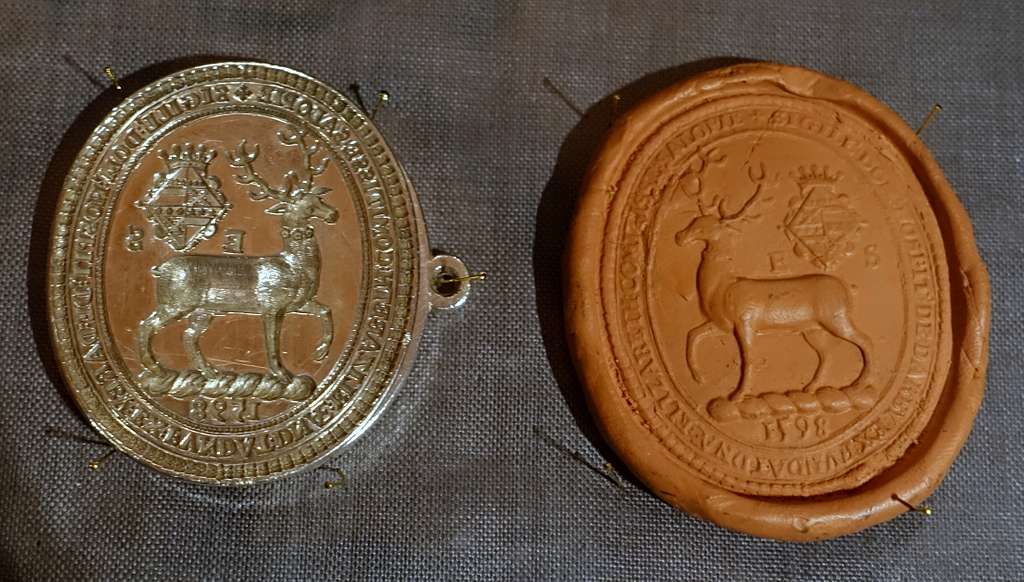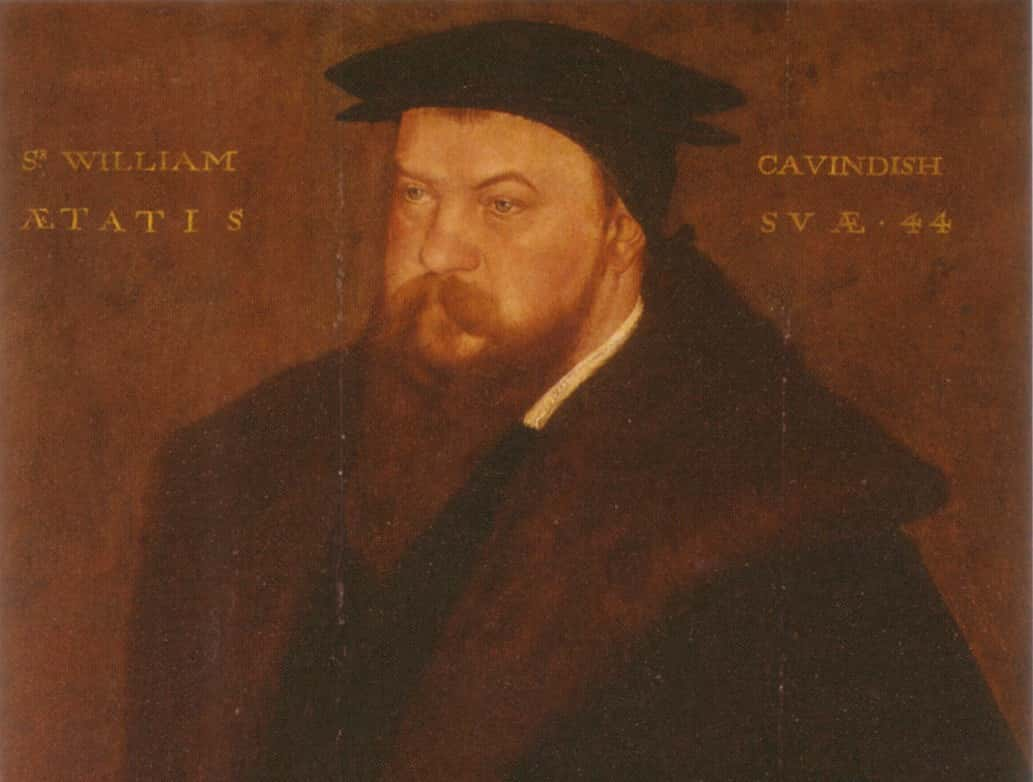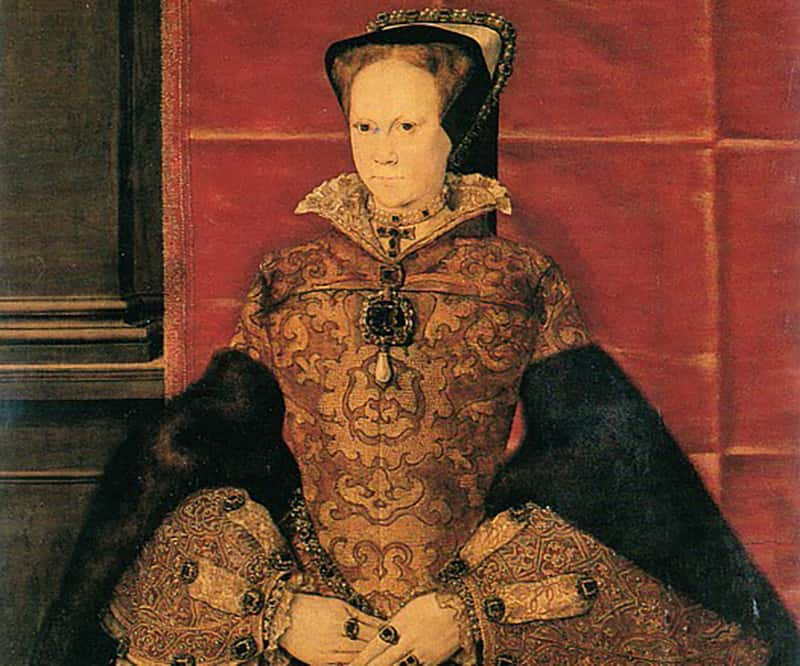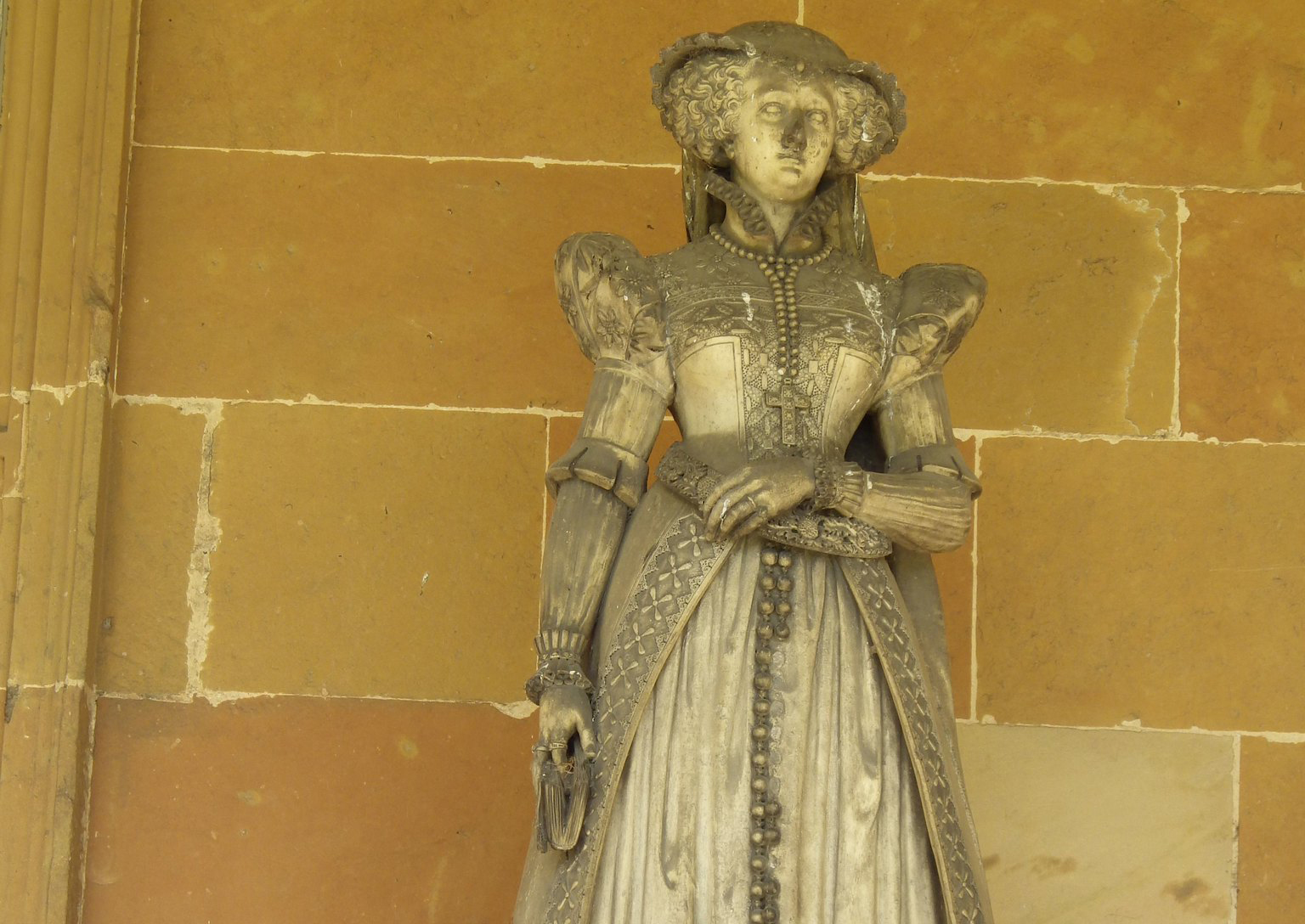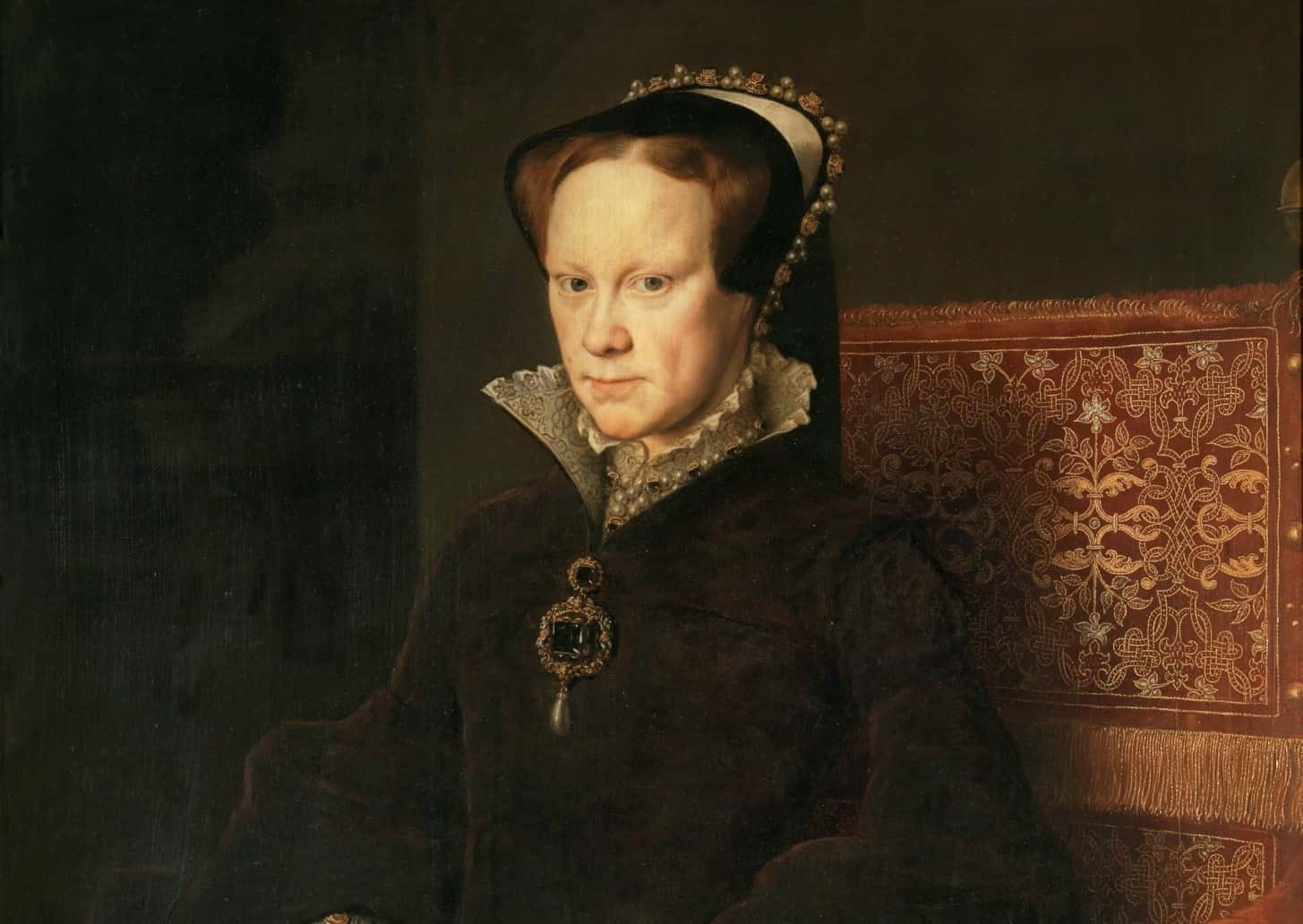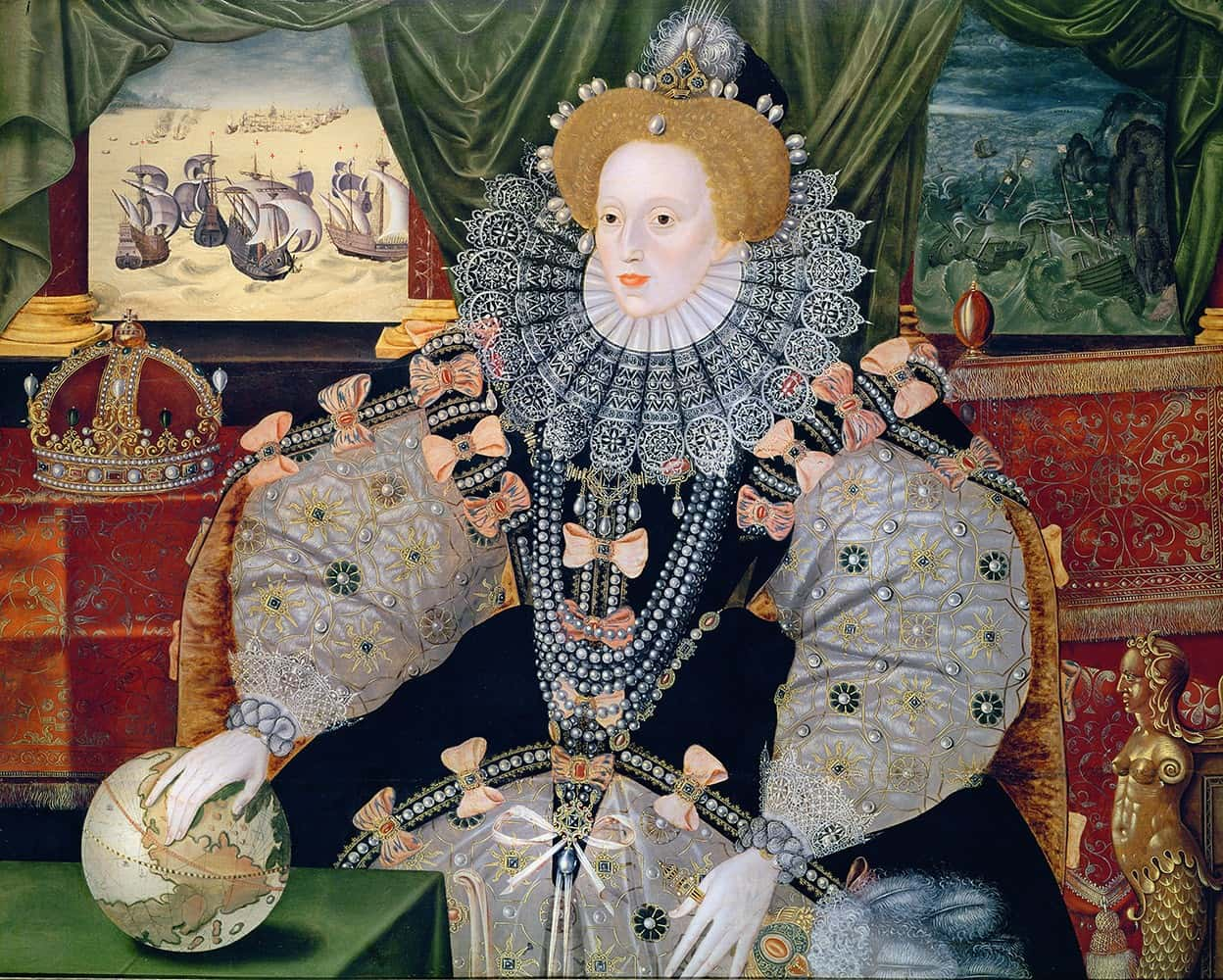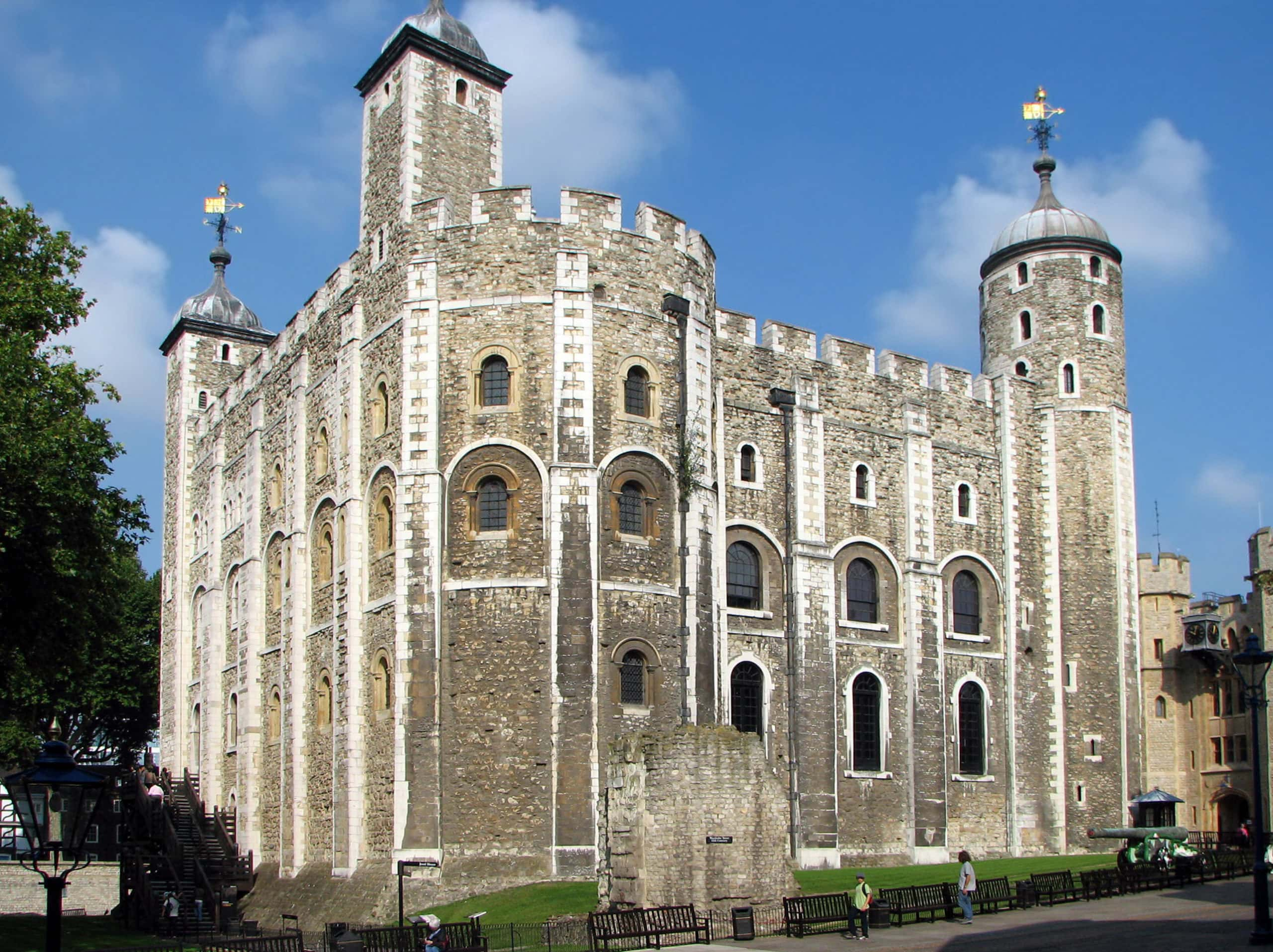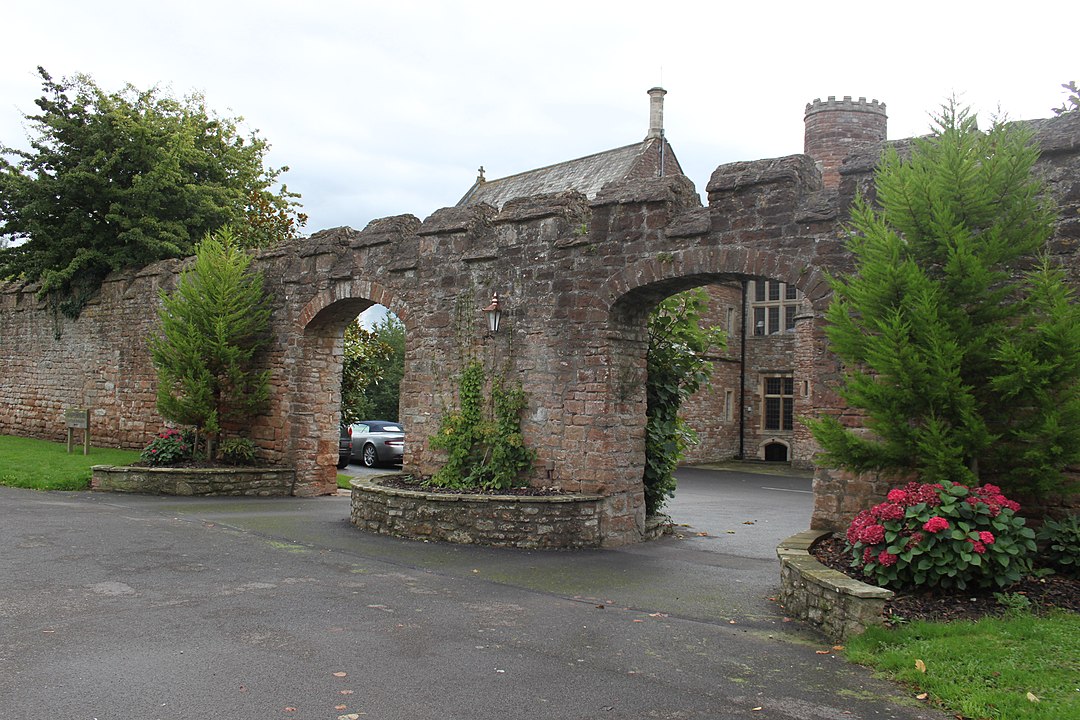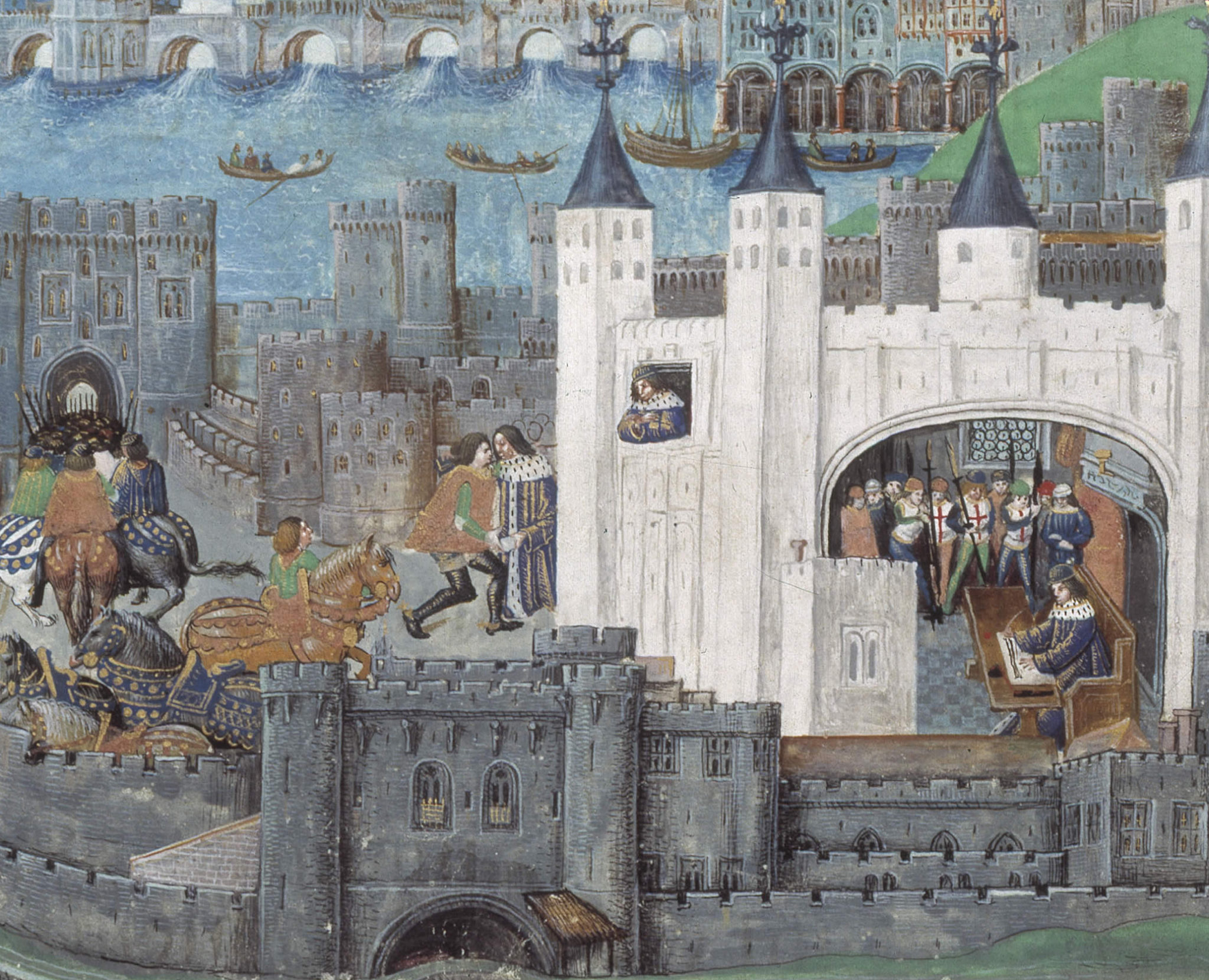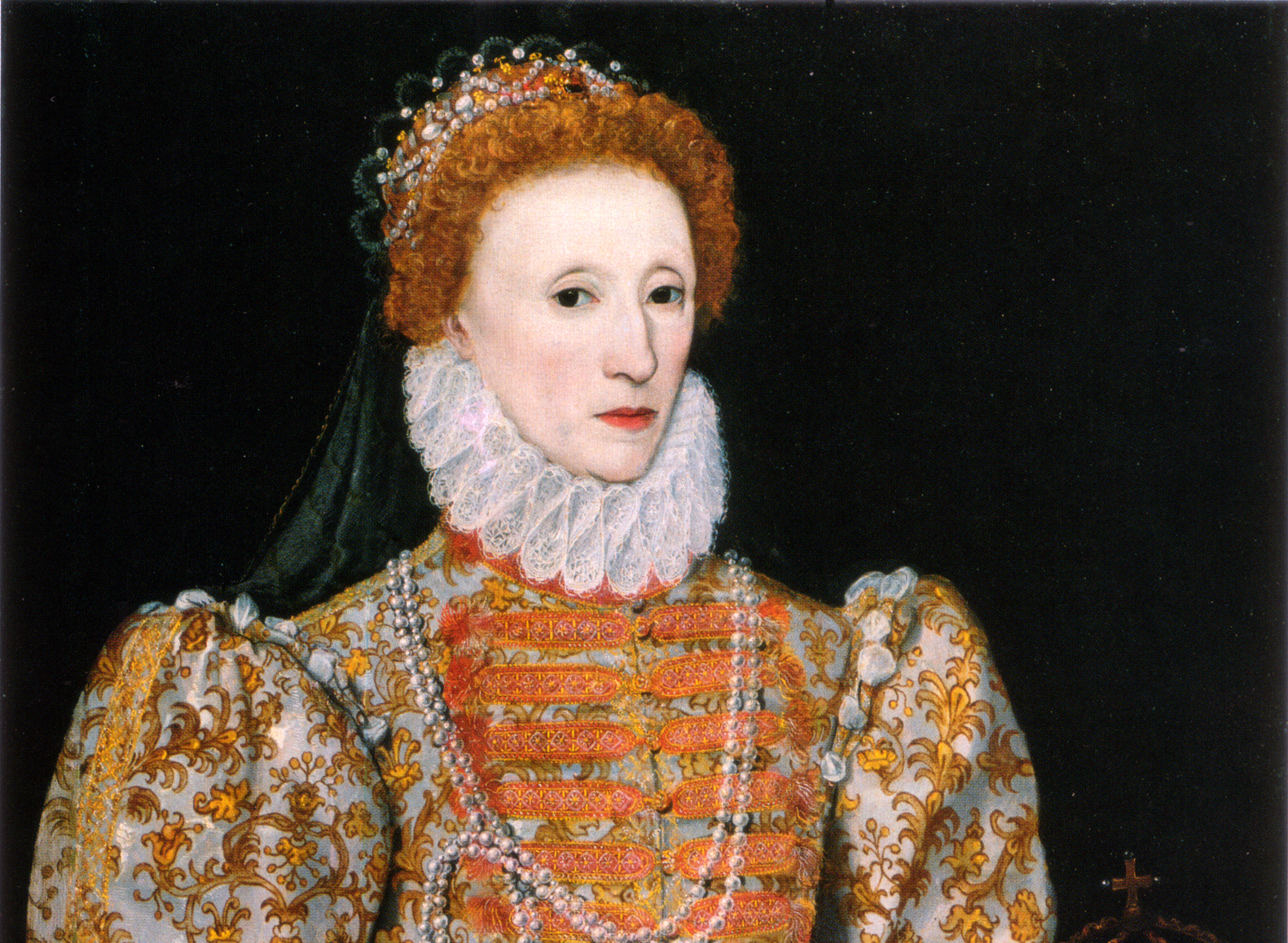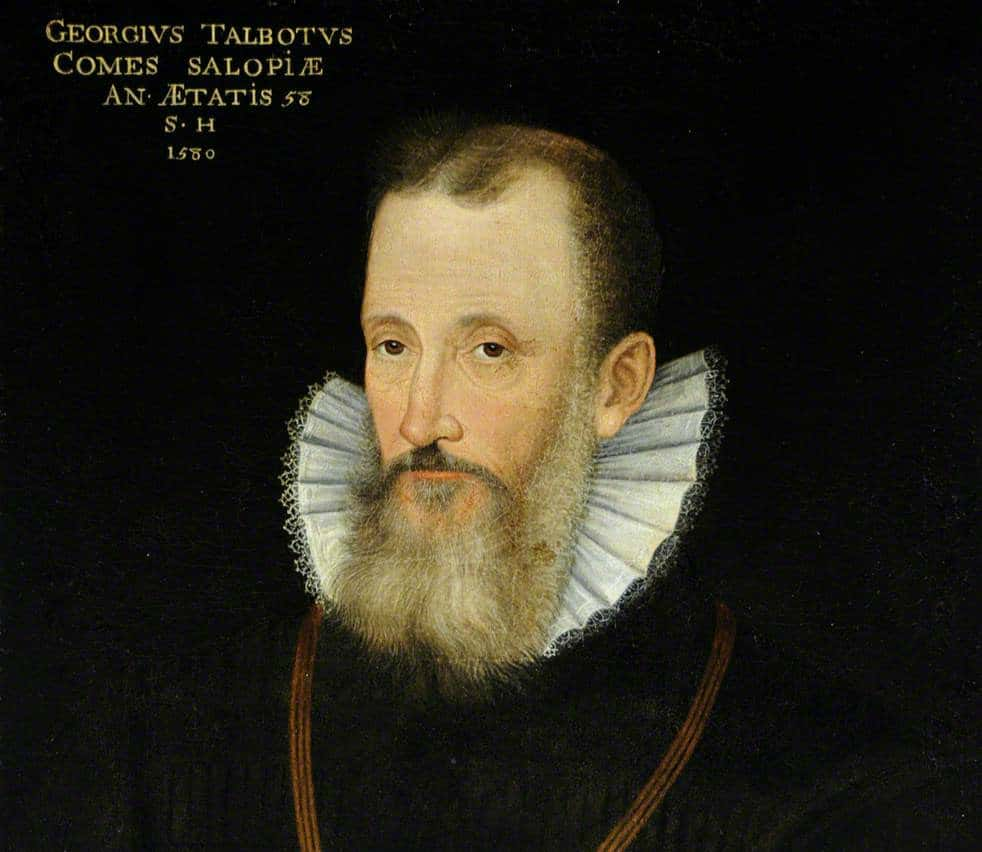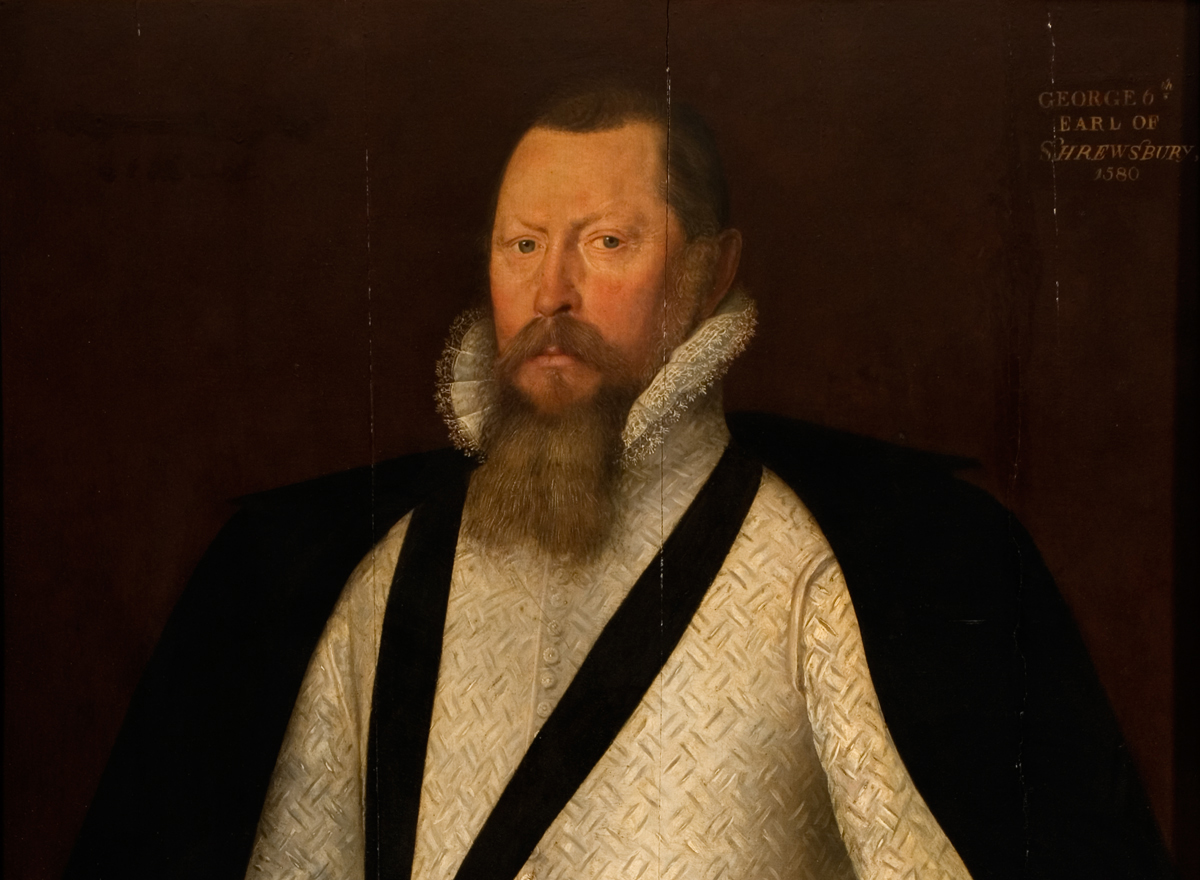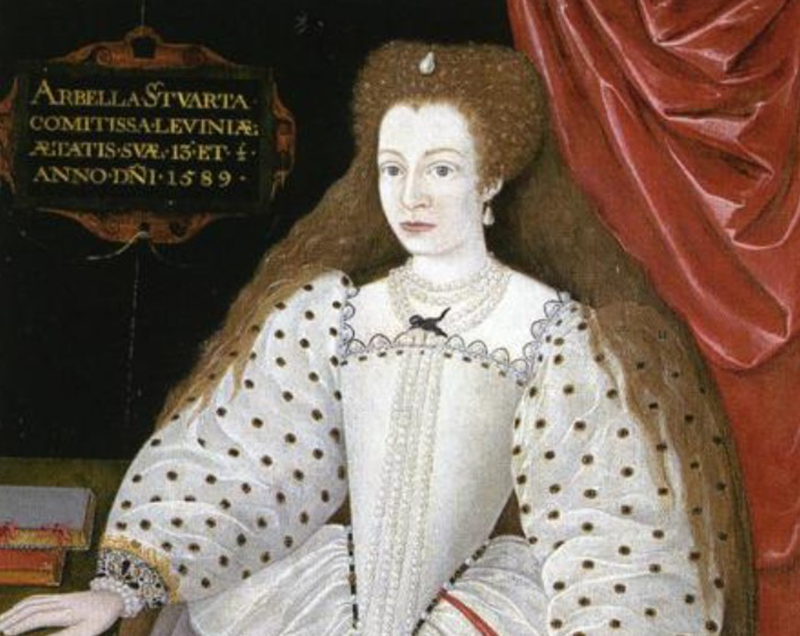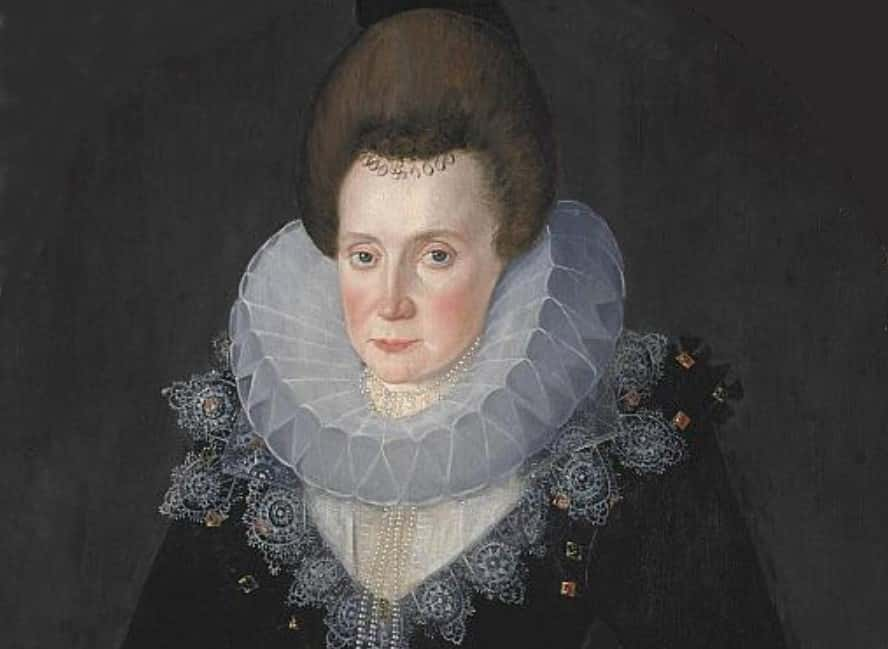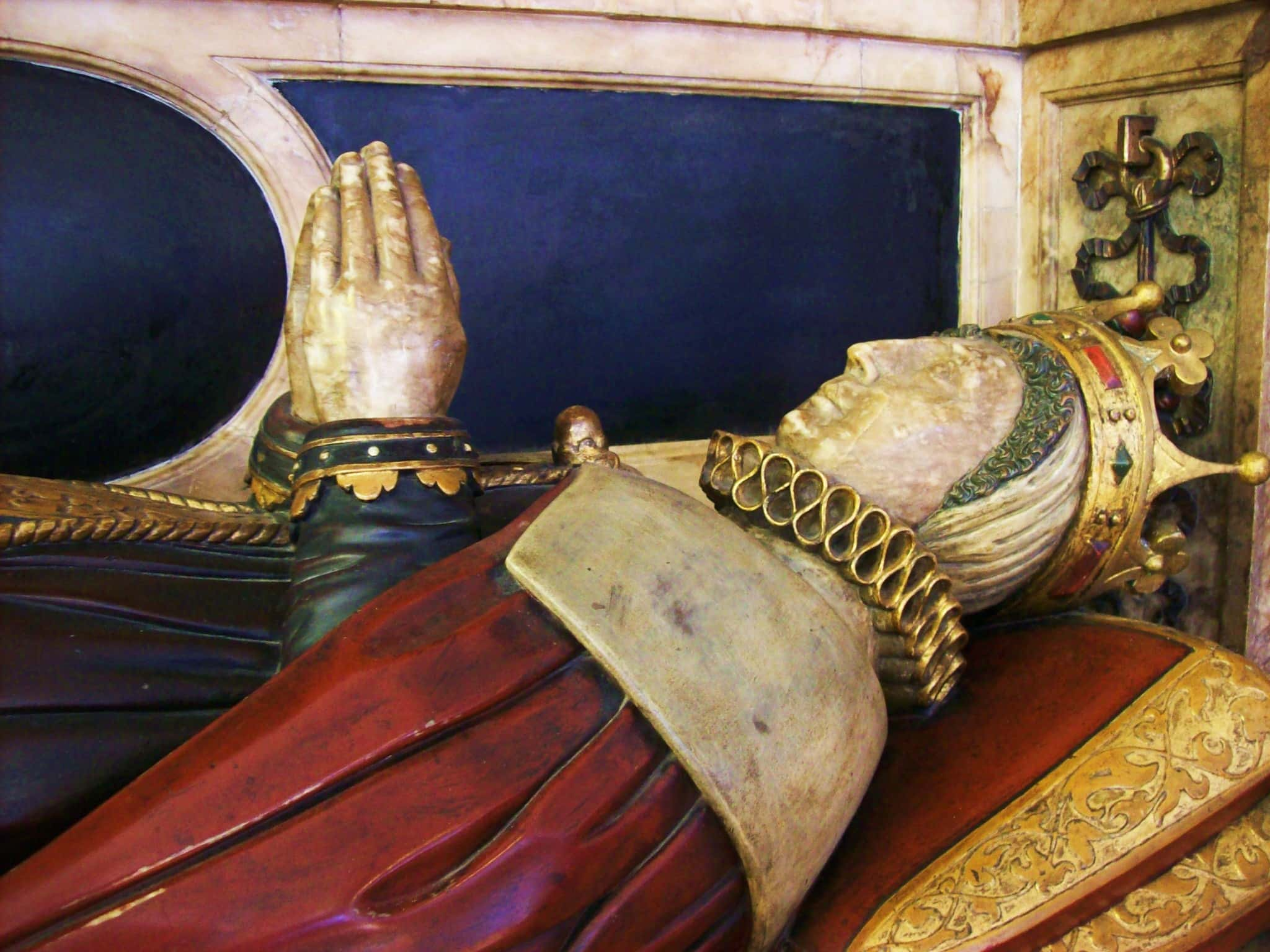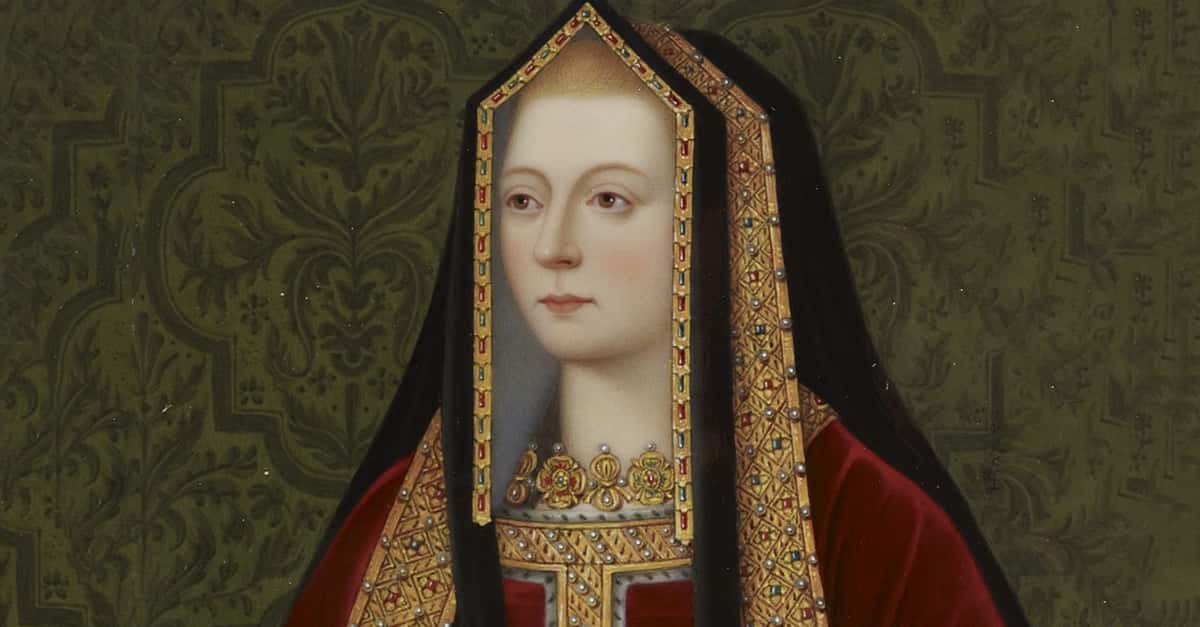Queen Elizabeth I had many ladies-in-waiting, but she only trusted Bess of Hardwick to do her dirty work—and it paid off. Bess was the wealthiest woman in Tudor England, and her life testifies to the heights a lady could achieve with the help of a little cunning…and about four rich, dead husbands. Bow down to these scandalous facts about Bess of Hardwick, the Tudor family’s secret-keeper.
1. She Was Born In A Time Of Turmoil
Elizabeth “Bess” Cavendish’s life began long before that of her famous patron, Queen Elizabeth I. Born somewhere in the 1520s, Bess came into the world at a time of great contention. King Henry VIII was trying desperately to rid himself of his first wife in order to marry Anne Boleyn.
Contrary to where she’d end up, Bess’s early life was about as far removed from this soap opera as you could get.
2. She Lost Her Father
Bess grew up with her poor yet well-connected parents at Hardwick Hall in Derbyshire. Despite their position, she didn’t have much of an education—or much of a childhood, as disaster struck early. Her father died at the age of 40, leaving behind five children: Bess, three sisters, and a brother.
His land and title would eventually go to his family—but first, to get there, the Hardwicks would have to play ball with the Tudors.
3. She Had No Other Choice
As members of the court, Bess and her family were subject to one of the more absurd aspects of Tudor bureaucracy. Although her mother was still around, the loss of her father meant that their estate became crown property until the surviving heir turned 21. As a result of these rules, Bess’s mother was destitute, and the Hardwick children became wards.
There was only one way out—and it wasn’t going to be pretty.
4. She Moved On Quickly
In order to simply survive, Bess’s mother Elizabeth had no choice but to find a husband and remarry—and fast. She didn’t look very far and ended up marrying another man from Derbyshire named Ralph. Bess had been barely out of diapers when she lost her father, but her family situation and her brother’s position as heir made one thing clear.
If she wanted any sort of agency in her life, she was going to have to follow in her mother’s footsteps.
5. She Didn’t Have A Lot To Offer
Bess may have been just a child, but she already had to consider marriage. There was just one problem. Her father had left her a meager dowry of just 40 marks, or £33. She wasn’t going to get her pick of the litter. So, like her mother, she thought locally, not globally. Bess eventually ended up betrothed to the son of a neighbor—but their family had motivations of their own.
6. They Rushed Into It
Robert Barlow, just a few years younger than Bess, was the heir to an estate not far from the Hardwicks' in Derbyshire. And they had one thing in common—or at least, they would. Maybe the Barlows had seen what had happened to the Hardwicks after the death of their patriarch and wanted to avoid the same fate.
Either way, when Robert’s father fell ill, the Barlows rushed the marriage between Robert and Bess. So, in May of 1543, Bess became a wife for the first—but not the last—time.
7. She Was A Child Bride…
Bess was in her “tender years”—meaning, likely less than 16—and Robert was just 13 when they tied the knot. Just days into their union, they faced a horrible tragedy. Robert’s father passed, leaving him as the heir to the family’s estate. Though the marriage may have helped to protect Robert’s claims, it was far from traditional.
Both parties were so young that it’s unlikely they consummated the union. And on top of that…they didn’t have a lot of time on their hands.
8. …And A Child Widow
She didn’t know it at the time, but Bess of Hardwick’s future wasn’t as set as she’d thought when she wed Robert Barlow. Just a year after their quickie marriage, Robert passed suddenly at the age of 14, leaving Bess a teenaged widow. For Bess, it was surely a heartbreaking loss—but also, a blessing in disguise. As the widow of an heir, she’d at least get some of his estate, right? Well, not quite…
9. They Blocked Her
Bess of Hardwick, now a widow at just 16, was entitled to one-third of her late husband’s estate—but instead, she got a cruel surprise. Robert’s family disavowed the marriage and said that Bess had no claim to his estate. Plus, the Court of Wards got involved, since Robert hadn’t yet reached the age of 21.
It was a horrible insult to an already grieving Bess. But you don’t make an omelet without breaking a few eggs, and she wasn’t about to take this slight sitting down.

Sign up to our newsletter.
History’s most fascinating stories and darkest secrets, delivered to your inbox daily. Making distraction rewarding since 2017.
10. She Fought Back
At the time—as you can imagine—women were not treated well. They went from their family straight into marriage and rarely had any independence, financial or otherwise. Despite these conventions, Bess was ready to stand up for herself and fight for her share of her deceased husband’s estate.
Though the amount wasn’t much, she eventually brought the Barlow family to court and won—but it was a process that took years, and in the meantime, she had to figure out what to do to get by.
 Mary Queen of Scots (2018), Focus Features
Mary Queen of Scots (2018), Focus Features
11. Her Ambition Came From Hardship
Bess of Hardwick had learned a hard lesson before even hitting adulthood. If she wanted something in life—anything—she’d have to fight tooth and nail for it. It was this principle that guided her in the years that followed, from impoverished widow to the richest woman in England. But how, exactly, did she get there? Well, in a world that was inhospitable to women, she went with what she knew: marriage.
12. She Moved On Up
Bess didn’t exactly have a strong foothold in Tudor society—no one in her family had risen above the rank of squire, after all. Still, it wasn’t that big of a world before her, and all she needed was to be in the right place at the right time to meet an advantageous match. Enter the perfect job for Bess: lady-in-waiting.
It was the kind of position that would put her right in line to meet a lord—and that’s exactly what she did.
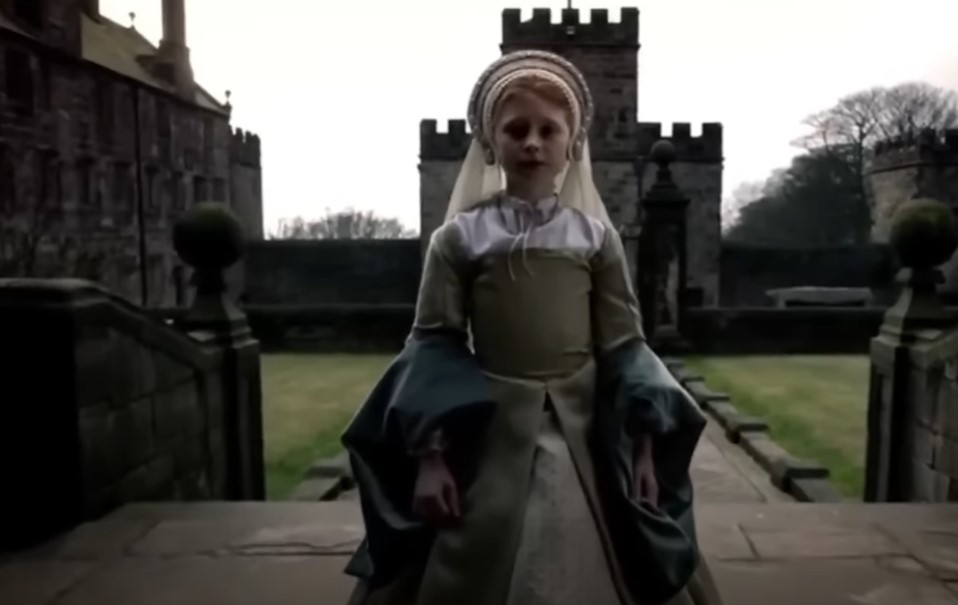 Elizabeth I (2017), Channel 5 Television Elizabeth I
Elizabeth I (2017), Channel 5 Television Elizabeth I
13. She Met Another Man
Roughly three years after the passing of her first husband, Bess met Sir William Cavendish. They were in such a rush to take their vows to each other that they tied the knot at a friend’s house at 2 am. Bess had been married before, so she knew what she was getting into, right? Wrong. Not only was Cavendish 20 years her senior, but he was also a widower who had three young children—and he needed someone to raise them.
Bess, meanwhile, was young and attractive. Although he may have offered security, Cavendish was really the one getting the better deal.
14. They Made A Surprising Match
On the surface, Bess and Cavendish couldn’t have been more different—but beyond that, they were, surprisingly, a match made in heaven. Like Bess, he was the son of a squire. Both were ambitious and their personalities were very much alike. And unlike others, he respected her opinion. He even sold some of his land in order to buy more near her hometown of Derbyshire.
At home, Bess was finally living her happily ever after—but the world around her was changing dramatically.
15. They Bided Their Time
The same year that Bess became Lady Cavendish, King Henry VIII finally kicked the bucket, leaving the throne to his sickly son, Edward VI. Keyword: sickly. Edward VI reigned for just five years before he passed, leaving England in a succession crisis. When Mary I became queen, that succession crisis became a religious one.
A fierce Catholic, Mary sought to turn back against the Protestant reforms that Henry had made. This turn of rulers and religion was the perfect opportunity for Lord and Lady Cavendish to find a niche within the Tudor court.
16. He Was Subtle And Smart
Bess must have learned a lot from her husband during their time together. Though he’d been close with two powerful courtiers who had, in turn, been disgraced, Cavendish had remained diplomatic and stayed out of the drama. He’d dedicated his time to Protestant causes…but when Mary I became Queen of England, he wisely converted to Catholicism.
Cavendish’s continued survival was proof that moving in silence could be much more advantageous than the outbursts and antics of his fellow courtiers. Bess took note—and as we’ll see, she eventually put these lessons into practice.
17. She Walked A Fine Line
Bess’s marriage to Sir William Cavendish had turned the tides of her fortune in dramatic ways. Once technically homeless, she now had two houses, one in the country and one in the city. Once a lady-in-waiting, she now employed two of her own—not to mention the rest of the household staff. But her domestic duties came with a disturbing dark side.
Early in her tenure at the country house in Northaw, the villagers and some of her staff revolted. It was her first brush with rebellion—and not the last.
18. She Had A Family
Of course, Bess’s new household also came with her husband’s two daughters from his previous marriage, one aged 13 and one nine years old. Bess made a welcoming stepmother—and soon enough, she became a mother in her own right. Her first child with Sir Cavendish, a girl she named Frances, was born less than a year after their marriage.
For all the comfort that her union afforded her, Bess took her role as matriarch seriously, and became pregnant again soon after…but this time, it didn’t go according to plan.
19. She Lost Two Of Her Children
In 1549, Bess gave birth to her second daughter, only for the girl to die in infancy. Still, Bess continued to grow the family, giving birth to five more children—but her heartbreak didn’t end with her first loss. In 1556, she gave birth to twins, but only one survived. It was her final pregnancy.
Of course, in typically ambitious fashion, Bess and Sir Cavendish used the births of their children as a political tool.
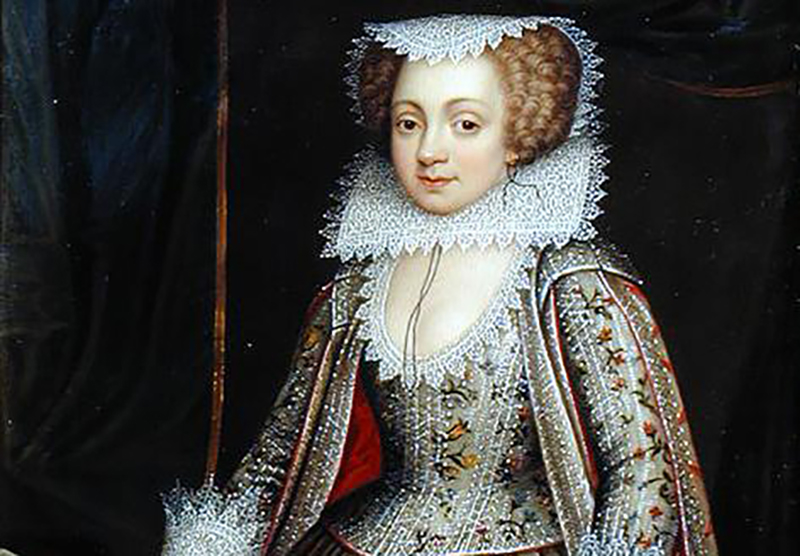 Flickr, Ann Longmore-Etheridge Granddaughter of Bess of Hardwick
Flickr, Ann Longmore-Etheridge Granddaughter of Bess of Hardwick
20. She Used Them
Bess named her first daughter after her friend Lady Frances Grey—mother to the infamous future “Nine Days Queen” Jane Grey. But she really took it up a notch when her son Henry was born. Bess made Princess Elizabeth—the future Queen Elizabeth I—godmother to the boy. While their home may not yet have been big enough to honor their powerful guests, Bess and her husband certainly made sure that their names wouldn’t be forgotten.
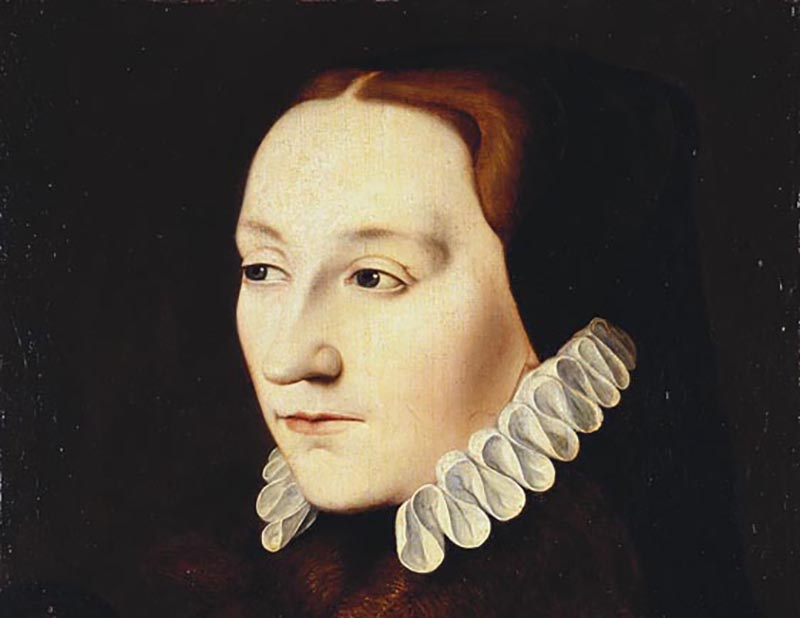 Wikipedia Frances Grey
Wikipedia Frances Grey
21. They Nearly Made A Fatal Error
Bess and her husband may have seemed wily, but they were still prone to faux pas and mistakes—and one was so much more dangerous than the others. In 1553, when their son Charles was born, they asked Queen Mary to be his godmother. It was their choice of godfather, however, that was bizarre.
They asked their friend Henry Grey—father to Jane, who’d tried to prevent Mary from reaching the throne—to take the job. Luckily, realizing their mistake, they got out of it unscathed…or so they thought.
22. She Went After Him
As Princess Elizabeth grew up and became a formidable rival to her sister Mary, the queen’s vengeful side became more and more prominent. Though Sir William Cavendish had both converted to Catholicism and honored Mary by making her godmother to his son, she was more and more suspicious of the courtiers in her midst.
And then, of course, there was Bess’s growing friendship with Elizabeth. It wasn’t long before Cavendish had a target on his back.
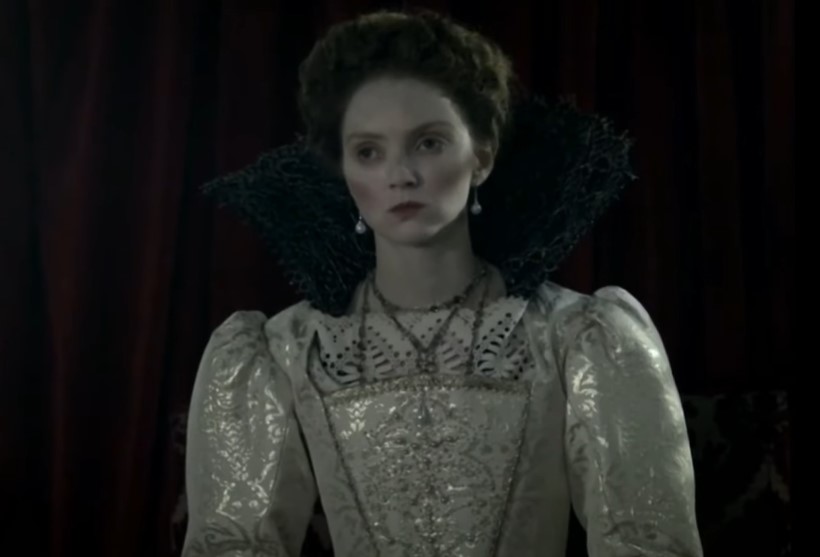 Elizabeth I (2017), Channel 5 Television
Elizabeth I (2017), Channel 5 Television
23. Their Fortunes Changed
All of sudden, the Lord Treasurer took an interest in Cavendish’s accounts, going through his books with a fine-toothed comb and finding that an amount of £5,237 was missing. Sir Cavendish was in deep trouble. Whether he’d done it on purpose or not was irrelevant. The Lord Treasurer had clearly only looked into him on Mary’s orders.
Cavendish summoned his wife Bess to London and tried to defend himself—but he only dug the hole deeper.
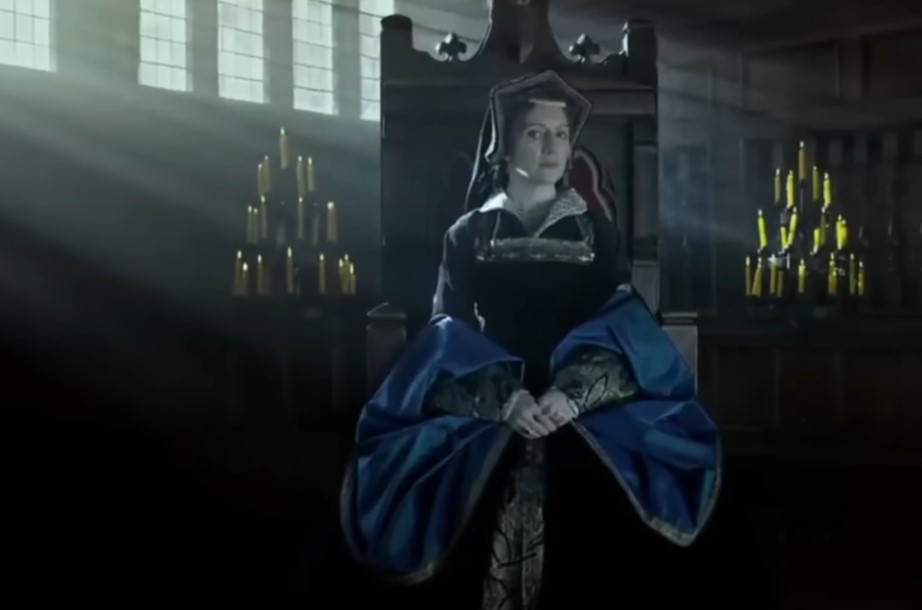 Elizabeth I (2017), Channel 5 Television
Elizabeth I (2017), Channel 5 Television
24. He Didn’t Know What To Do
Cavendish teetered between defending himself from the accusation and begging for forgiveness. He told Mary that he’d used some of the money to help defend her. He also claimed that repayment was impossible and that it would leave him and Bess in extreme poverty. Neither strategy worked. Saddled with the knowledge that he didn’t really have a way out, Sir Cavendish worked himself into a frenzy preparing his defense.
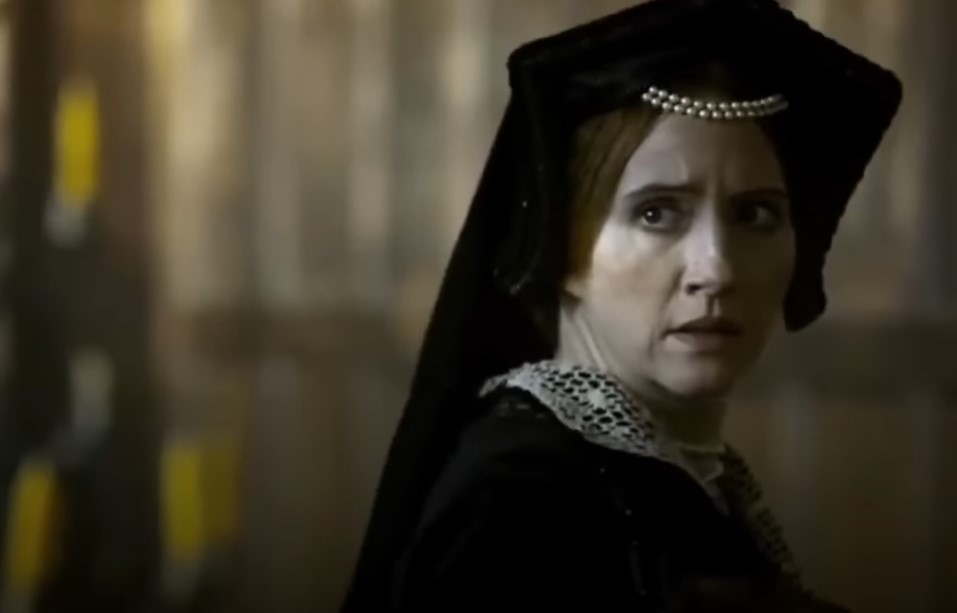 Elizabeth I (2017), Channel 5 Television
Elizabeth I (2017), Channel 5 Television
25. She Lost Another Husband
When Bess of Hardwick arrived in London to see her husband, it was clear that the stress was wearing on him—but she had no idea just how bad it was going to get. Sir Cavendish had been drinking heavily, and by the time he was supposed to appear to defend himself, he was too ill to go in person.
He never recovered. Less than two weeks later, Bess was a widow again.
26. She Was Screwed
Before this untimely passing, Bess and Sir Cavendish spent a decade as husband and wife. The odds had been stacked against them at the beginning, but they’d prospered in almost every facet of life…at least, until those final few months. Now, not only was Bess a widow again—but to add insult to injury, she had no inheritance to speak of, only her husband’s debt of some £5,000.
Anyone would’ve crumbled under the pressure—but Bess of Hardwick wasn’t just anyone.
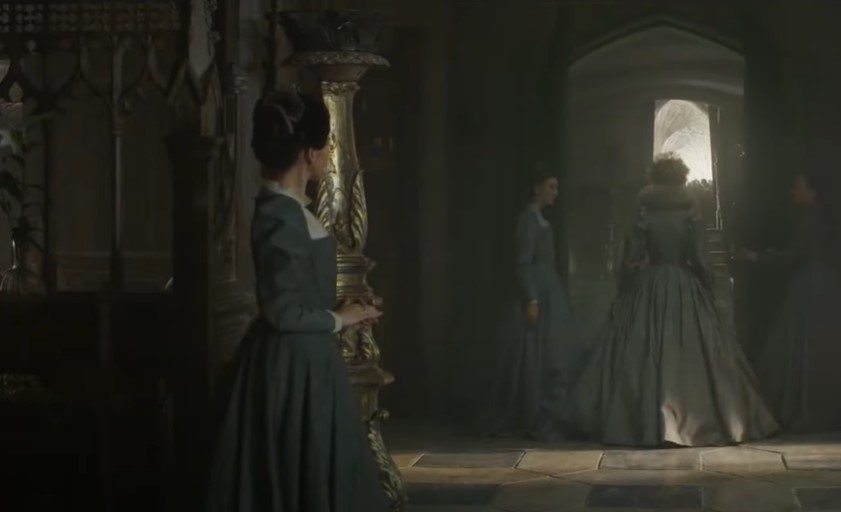 Mary Queen of Scots (2018), Focus Features
Mary Queen of Scots (2018), Focus Features
27. She Came Up With A Plan
Instead of succumbing to humiliation and worry, Bess made this difficult period a time to shine. She didn’t want to just sell off her family’s land to pay her debts, or remarry and rely on yet another husband. Her plan instead was to make her family into a dynasty—one powerful enough that a scandal of a few thousand pounds wouldn’t touch them.
Luckily, she had good timing on her side.
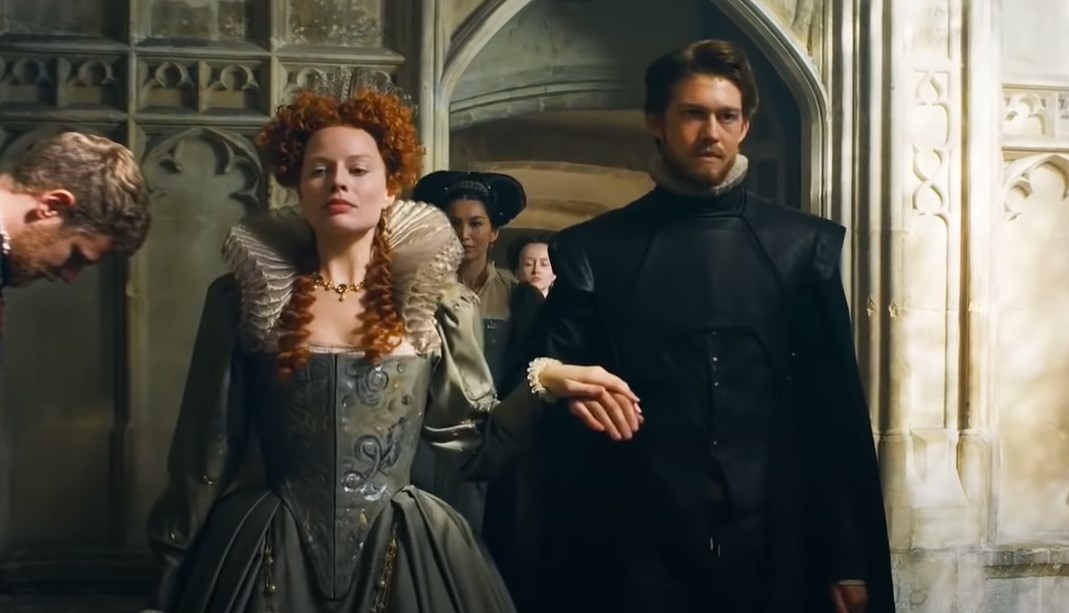 Mary Queen of Scots (2018), Focus Features
Mary Queen of Scots (2018), Focus Features
28. She Got Face Time
Bess began to get her family’s books in order…but she also began to take mysterious trips through England, turning up in London one week and Brentford or Hatfield the next. And her motives were utterly devious. Bess might not have been in Queen Mary’s good graces—but Mary was seriously ill, and had named Elizabeth as her successor.
As Elizabeth began to pick out who would make up her court, Bess was conveniently nearby, making her face and name known. And her cunning machinations would pay off.
 Elizabeth I (2017), Channel 5 Television
Elizabeth I (2017), Channel 5 Television
29. She Got A Promotion
Bess was unaccounted for on the day that Mary finally passed—but it’s likely that she was at Elizabeth’s side and witnessed the new queen’s first speech. Before the crown was even on her friend’s head, Bess was busy furnishing a new home for herself in London. Her children were there to watch the coronation, and Bess finally got what she’d been working for.
Bess was now lady-in-waiting to the new Queen Elizabeth I.
30. She Still Had A Big Problem
Following the passing of her husband and the rock bottom that it represented, Bess had climbed her way back to the top—but something was still amiss. There was the small matter of the £5,000 she owed. Bess was living within her means but wasn’t making enough to make a dent. She hoped her position at court might lead to forgiveness for the debt…or, at the very least, an alternate route out of the obligation.
 Mary Queen of Scots (2018), Focus Features
Mary Queen of Scots (2018), Focus Features
31. She Knew What She Wanted
Bess of Hardwick watched as Elizabeth rewarded her supporters for their hard work—and saw an opportunity. One of them, Sir William St Loe, got not only a raise but a new title as well: Chief Butler of England. He had money and his duties kept him in close proximity to the queen. For the ambitious Bess, this made him the perfect match.
Before the end of Elizabeth’s first year as queen, Bess and Sir William were married.
 Elizabeth I (2017), Channel 5 Television
Elizabeth I (2017), Channel 5 Television
32. He Stood Up For What He Believed In
With their loyalty to Elizabeth, the newlyweds seemed like a new match made in heaven—but Bess’s new husband William had a seriously dark history. Unlike her second husband, this William had been such a fierce Protestant that he’d aided in rebellions against Queen Mary and had spent time in the infamous Tower of London as a result.
Of course, now that all was said and done, this made him an even more favorable courtier for Elizabeth. Bess was primed to take advantage of this—but one question remained.
33. What Was In It For Him?
Bess’s £5,000 debt was no secret. Though she definitely carried herself and lived as though she wasn’t in financial trouble, there was no fooling court gossips. By marrying her, Sir William St Loe was not only taking on what Bess owed but also the dowries she’d have to pay as her daughters and stepdaughters married.
People definitely questioned why he’d even bother with her—and they settled on a surprising answer. It seemed as though Sir William genuinely loved Bess. She was beautiful and charming, and his letters to her express his ardor and tenderness.
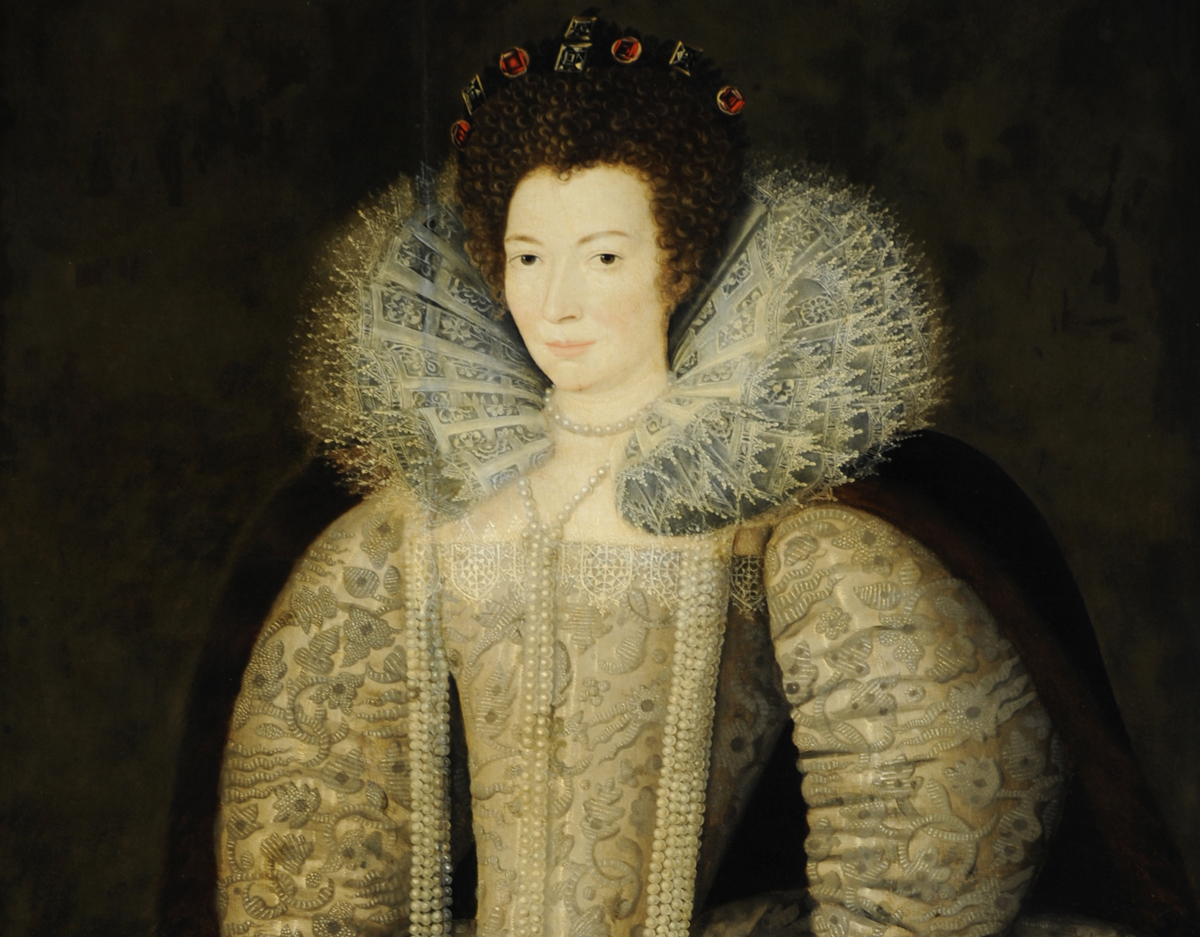 Wikipedia Bess of Hardwick's daughter
Wikipedia Bess of Hardwick's daughter
34. She Met A New Enemy
Once again, Bess had lucked out—but not everyone was happy for her. Sir William was his family’s heir, and that meant he’d be spending their money to settle Bess’s debt. This infuriated his brother Edward, who’d previously tried to have Sir William disinherited long before Bess had come into the picture. And that was just one part of Edward's checkered past.
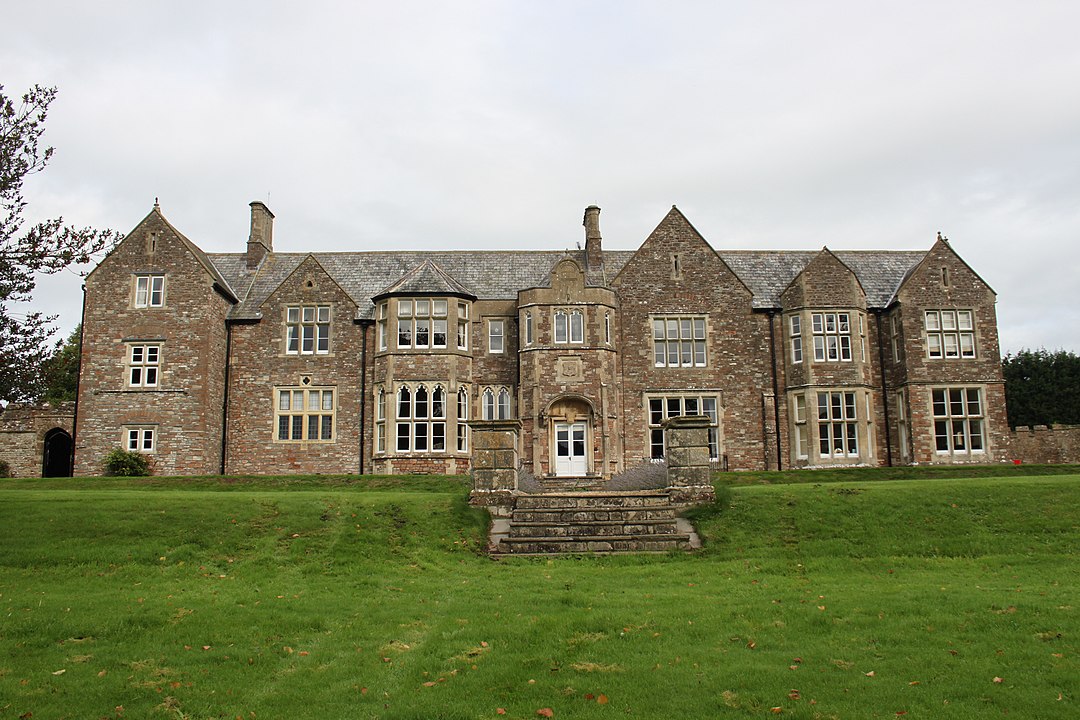 Wikipedia St Loes country seat
Wikipedia St Loes country seat
35. He Had A Dark Past
Bess’s new brother-in-law had an utterly disturbing history. After he married a young and conspicuously pregnant widow, neighbors whispered that he’d poisoned her husband. Then, when the widow died, the rumors about Edward St Loe got even darker. Well, if he hadn’t earned his black sheep reputation yet, his visit to Sir William and Bess cemented it.
36. He Poisoned Her
In 1561, Edward St Loe and his mother came to London to visit Sir William and Bess. She did her best to welcome her in-laws, but soon after they arrived, she and William fell ill. After they recovered, they made a chilling realization. Edward had poisoned them. Even his mother admitted that it had to have been Edward.
Even more strangely, Sir William and his host in London had three men imprisoned in the Tower for what had happened…but not Edward. Instead, he came up with another plan to keep his brother in check.
37. She Was Back On Top
Sir William drew up a deed that stated that his lands were jointly owned with Bess of Hardwick. This way, there was no reason for Edward to come after them. The lands would then go to Bess’s kids if anything happened to them. His promotion had more than paid off, and Bess was once again enjoying the lifestyle she’d been accustomed to during her last marriage.
This didn’t mean that she was immune to getting caught up on the wrong side of court intrigue, though.
 Mary Queen of Scots (2018), Focus Features
Mary Queen of Scots (2018), Focus Features
38. She Couldn't Help Her
Bess had an unexpected visit from her close friend Lady Frances Grey’s daughter Catherine—who shared a heartbreaking tale. Catherine, who needed the queen’s permission to marry, had wed a courtier in secret, was now pregnant with his child, and he’d fled. Bess knew how angry this news would make Elizabeth—so she put any tenderness she felt for the girl aside and sent her away. Unfortunately, it wasn’t enough.
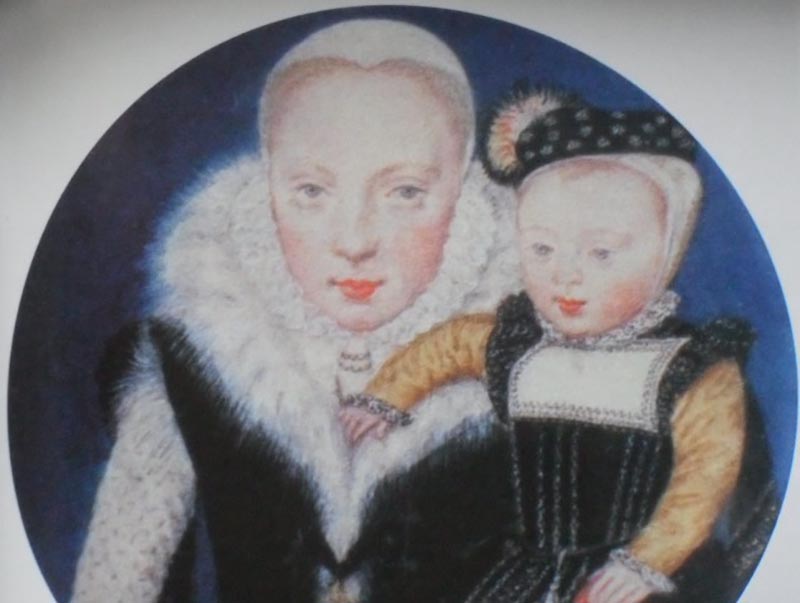 Wikipedia Catherine Grey with son
Wikipedia Catherine Grey with son
39. She Wasn’t Bulletproof
When Elizabeth learned about Catherine Grey’s secret marriage and pregnancy, she was predictably furious—and the consequences were brutal. She not only had the girl imprisoned, but she also punished Bess too, sending her to the Tower of London for a total of 31 weeks. In fact, she was there with the three men who’d been put behind bars for poisoning her.
Though it was unclear exactly why Bess’s sentence had been so harsh, modern historians have claimed that it was perhaps Elizabeth’s punishment for the money she still owed.
40. She Was Free
This explanation makes sense, as Elizabeth soon converted Bess’s debt to a £1,000 fine. Sir William paid it, and both asked for pardon from the Queen. It was a win-win-win. Bess was now free of the problem that had haunted her for years, and Elizabeth no longer had any doubts about Bess’s loyalty. Sir William got another promotion—though he didn’t get to enjoy it for long.
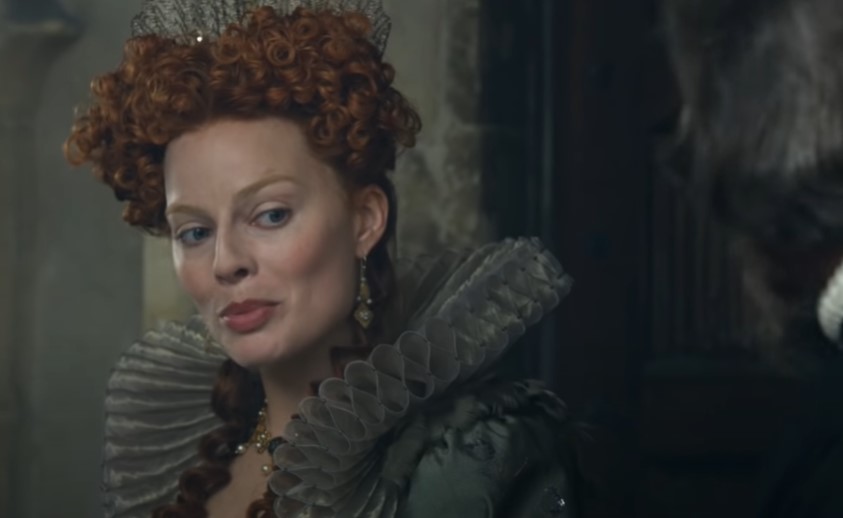 Mary Queen of Scots (2018), Focus Features
Mary Queen of Scots (2018), Focus Features
41. She Lost Another Husband
Unfortunately for Sir William and Bess, they were still being harassed by his brother Edward. In an attempt to turn the tables, he even accused Bess of giving Sir William poison. William’s faith in Bess was steadfast, and he denied his brother’s claims. But he was in for a cruel surprise. During a visit from Edward in 1565, Sir William St Loe suddenly died.
To many, the culprit (Edward) and method (poison) were clear. But there was no proving it—which meant that, to some, Bess was the potential poisoner.
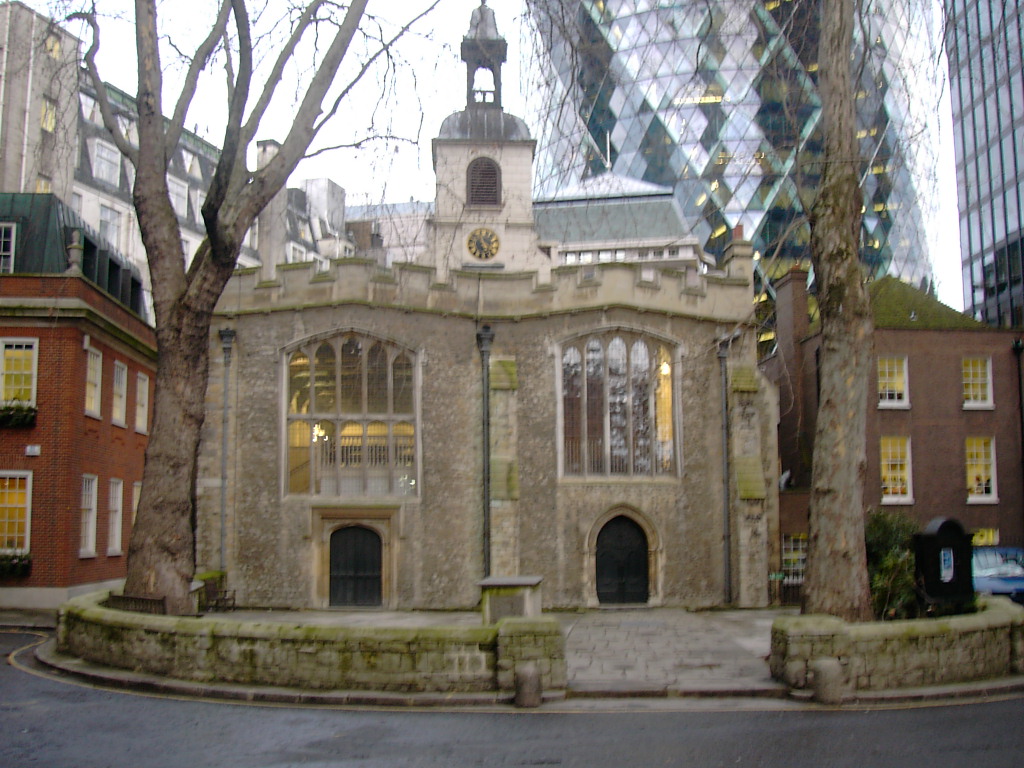 Wikimedia Commons Place of burial
Wikimedia Commons Place of burial
42. She Was Damaged Goods
The passing of Sir William St Loe made Bess of Hardwick immensely wealthy—which, in turn, only led to more rumors about her. Though Queen Elizabeth did her best to punish anyone who spoke against Bess, the damage was done, and her name was tarnished. However, not quite tarnished enough to take her off the market.
 Mary Queen of Scots (2018), Focus Features
Mary Queen of Scots (2018), Focus Features
43. She Was Wildly Wealthy
Sir William’s income, which now went directly to Bess, was approximately £60,000 per year—equivalent to £20,000,000 in 2021. And since she wasn’t married, she was eligible for another position of great favor in Queen Elizabeth’s court. It would’ve been more than enough for her to rest on these laurels—but she was still very beautiful and very much an eligible bachelorette.
It wasn’t long until the right man knocked on her door.
 Mary Queen of Scots (2018), Focus Features
Mary Queen of Scots (2018), Focus Features
44. She Married Up
Bess of Hardwick had married out of desperation, had married out of love, and had married to get herself out of a sticky situation. Now, she held all the cards—and she took her time picking her next partner. The man who eventually made the grade was George Talbot, the 6th Earl of Shrewsbury. This made her a countess—and even more fabulously wealthy than she’d been before. But that wasn’t all she got out of it.
45. Things Got Uncomfortably Close
Bess had always been preeminently preoccupied with her children’s potential unions. She’d even arranged two different marriages while in the Tower of London. But her marriage to Shrewsbury came with an unexpected benefit: She also married off two of her kids to two of his. Creepy…or efficient?
46. Things Went Sour
After everything she’d gone through, Bess of Hardwick’s marriage to the Earl of Shrewsbury seemed like she’d finally get her fairytale ending—but it was really a horror story. Though Shrewsbury was initially sweet and kind to Bess, there were outside factors that wore on both of their patience and eventually turned them against each other. Mainly: an unwanted houseguest.
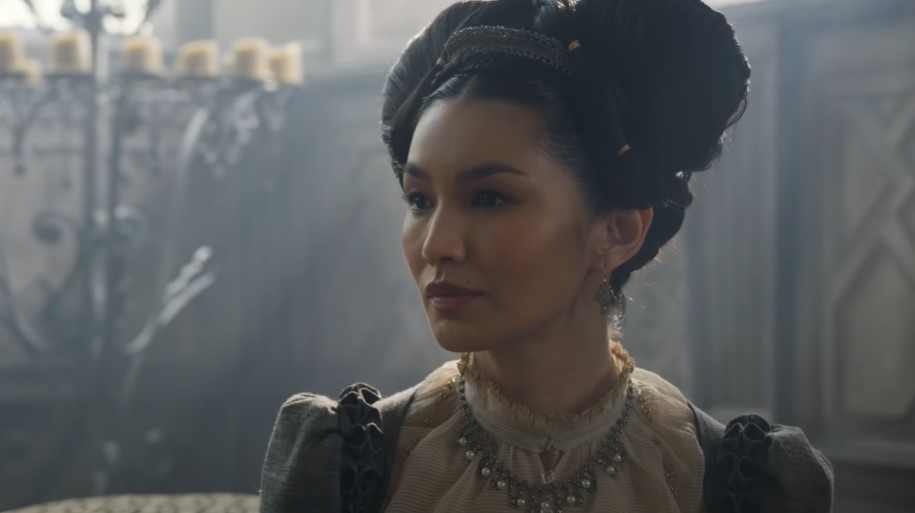 Mary Queen of Scots (2018), Focus Features
Mary Queen of Scots (2018), Focus Features
47. Their Position Worked Against Them
Following an uprising by Scottish lords, Mary, Queen of Scots had fled her home and asked her cousin, Queen Elizabeth, for refuge. Elizabeth was unsure what to do with Mary. After all, she was technically a rival for the English throne, and keeping those in power in Scotland in check seemed like a wise move.
So, she decided to park Mary with one of her trusted advisors. Well, two, actually: the Earl of Shrewsbury and Bess of Hardwick.
 Mary Queen of Scots (2018), Focus Features
Mary Queen of Scots (2018), Focus Features
48. She Had A Lot Going On
Between Bess, her children, and his own children, Shrewsbury had a lot on his plate financially. And now he had a dethroned queen on his hands on top of it all. In fact, Mary was pretty much the only one more demanding than Bess when it came to his money and his patience. Bess, in turn, was Queen Elizabeth’s favorite at the time, a job that was a lot more stressful than it seemed on the outside.
It was a recipe for disaster.
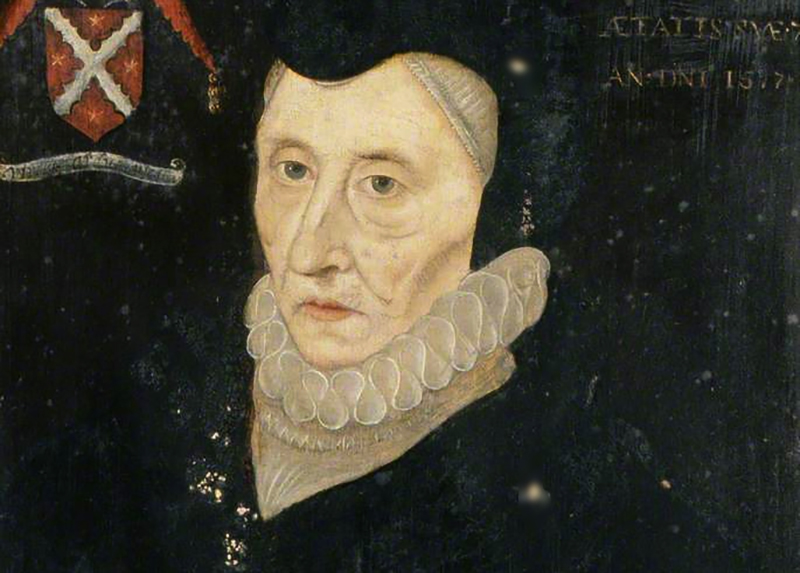 Flickr, Ann Longmore-Etheridge
Flickr, Ann Longmore-Etheridge
49. They Had The Worst Houseguests Ever
When Bess and Shrewsbury took in Mary, Queen of Scots, they had absolutely no idea what they were getting into. What was supposed to be a temporary arrangement turned out to last 16 years. They moved her and her massive entourage between properties a total of 46 times. For Bess and Shrewsbury’s trouble, Queen Elizabeth paid them about half of what it actually cost to take care of everyone.
They were so wealthy that it wasn’t really a problem—but it wore on them immensely.
 Mary Queen of Scots (2018), Focus Features
Mary Queen of Scots (2018), Focus Features
50. She Couldn’t Get A Moment Alone
Queen Elizabeth’s behavior made everything worse. She wouldn’t allow Shrewsbury to leave Mary’s side. When Bess’s beloved grandson died, he had to beg the queen to let him go and comfort her. Elizabeth insisted he bring Mary and her people along. Resentful of the burden, Bess did what she did best—she picked out a suitable mate for her youngest daughter.
But this time, she made a huge misstep.
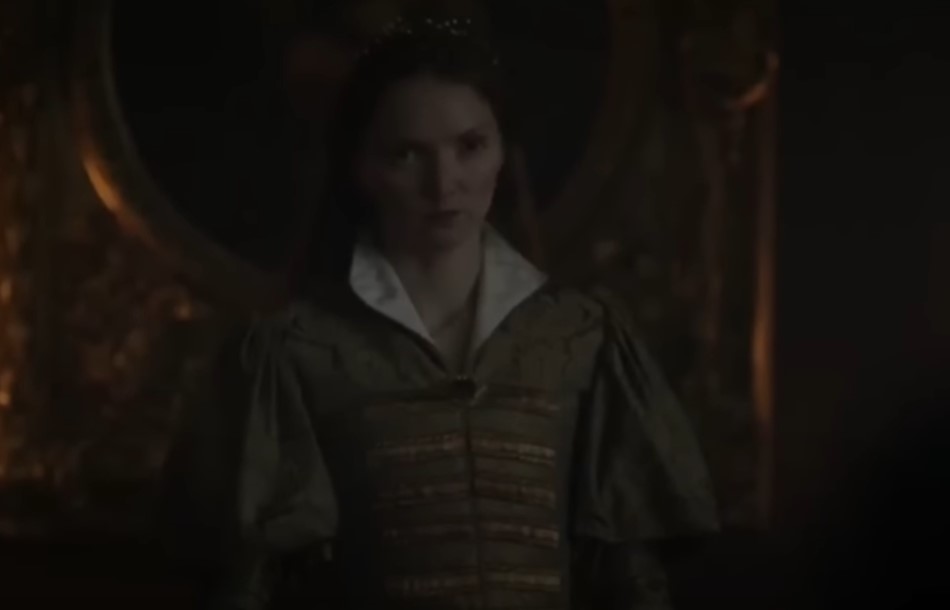 Elizabeth I (2017), Channel 5 Television
Elizabeth I (2017), Channel 5 Television
51. She Stepped On The Wrong Toes
Unmarried and childless, Queen Elizabeth was all too aware of how the line of succession worked. Next was Mary, Queen of Scots…and fourth down the line was Charles Stuart, the boy who Bess had just married off her daughter to. Bess likely knew just what she was doing—but she didn’t care. Elizabeth, on the other hand, was miffed that her most trusted confidante had made such a power play.
She put another intermediary in the union into the Tower of London, but didn’t punish Bess—perhaps knowing that having Mary as her charge was punishment enough.
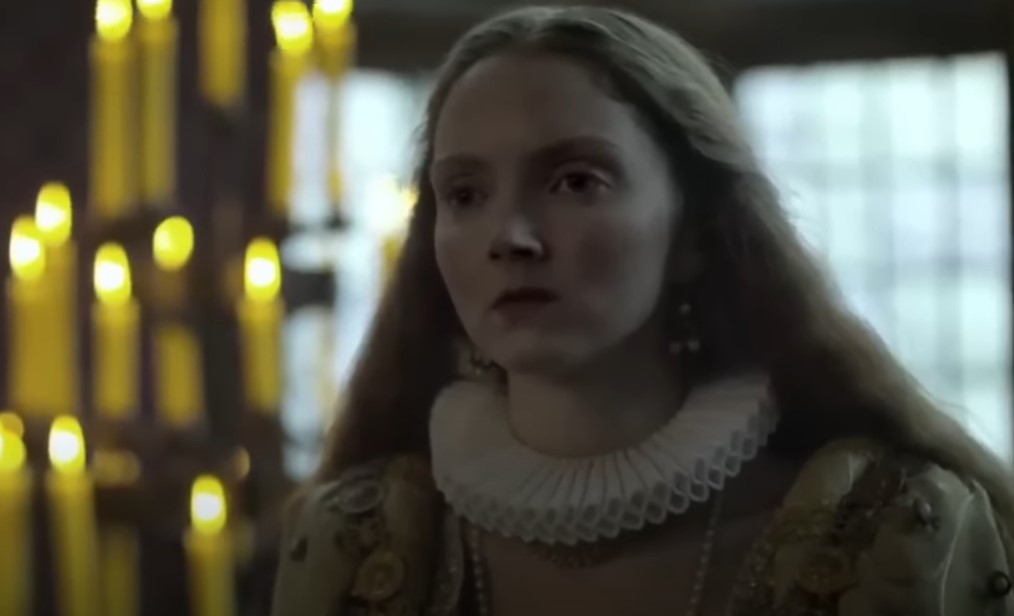 Elizabeth I (2017), Channel 5 Television
Elizabeth I (2017), Channel 5 Television
52. She Lost People One By One
Bess had set up the chess pieces, now she just had to knock some down—but fate came in to throw everything into chaos. First, Charles Stuart passed soon after his wife gave birth to a daughter, Arbella. Then, his mother followed, as well as his widow, Bess’s daughter Elizabeth. Which meant Bess was now the grandmother and sole caretaker of the heir to the throne.
Both Queen Elizabeth and the reigning King of Scotland made sure that Arbella was left with nothing except her royal blood. However, Bess wasn’t going down without a fight.
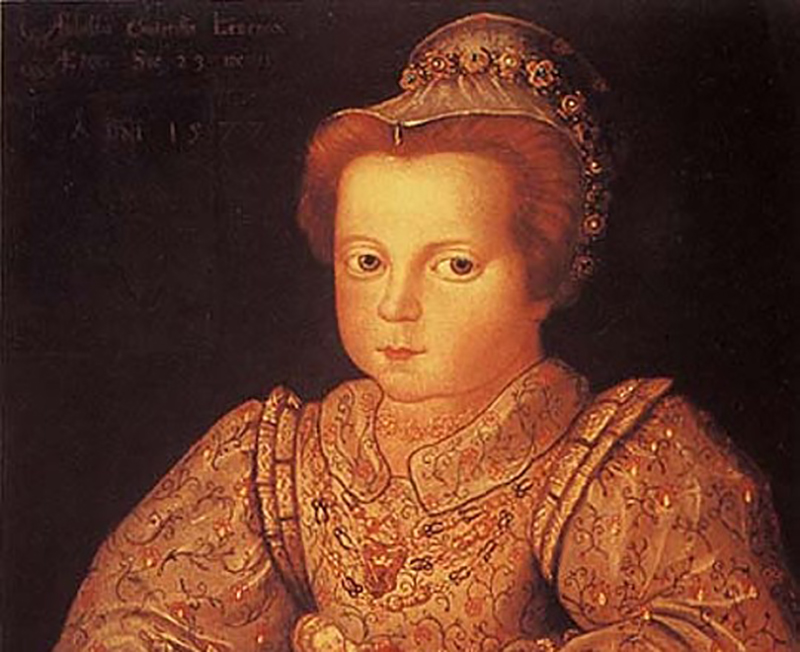 Wikipedia Arbella Stuart
Wikipedia Arbella Stuart
53. She Saw Her Big Chance Slip Away
Bess of Hardwick had started as a squire’s daughter, and now she had a chance for her family line to become royalty. She fully believed that Arbella could do it—but there was one thing she hadn’t counted on. Arbella had a rebellious streak. Bess had to actually lock the girl in for fear that she’d go out and elope.
This just made things everything worse—until it came to a brutal head.
54. She Pushed Them Away
Arbella began to plot against her grandmother with the help of her uncle Henry. She had plans to marry a descendant of Henry VII and escape. For Bess, who’d done everything for Arbella, it was the final straw. She disinherited the girl. Though Arbella never made it to the throne, Bess ultimately got her wish to see someone from her line ruler over England. She’s a distant relative of Queen Elizabeth II.
55. She Drove Them Apart
The stress of housing Mary, Queen of Scots wore on Bess’s marriage to Shrewsbury—but that was just the start of their problems. Mary played them against each other, and it eventually led to their separation. Bess even believed that the two were having an affair. Elizabeth tried her best to get them to reconcile, eventually letting Shrewsbury off the hook and moving Mary, but it was too late.
 Mary Queen of Scots (2018), Focus Features
Mary Queen of Scots (2018), Focus Features
56. She Kept Losing People
Bess and Shrewsbury had been separated for nearly 10 years when he fell ill and passed, leaving Bess a widow for the fourth and final time. As the Dowager Countess of Shrewsbury, she was more wealthy than ever—but she was also mostly alone. In the years that followed, she lost her close friend Queen Elizabeth and was estranged from many of her children and grandchildren.
She reconciled with her granddaughter Arbella briefly—and luckily, she didn’t live to see the girl’s disturbing fall from grace.
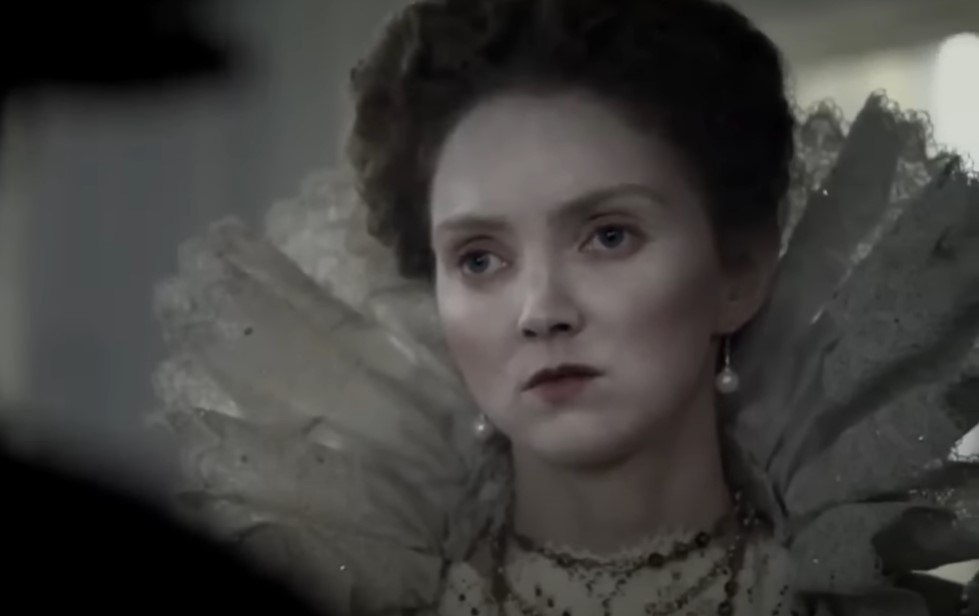 Elizabeth I (2017), Channel 5 Television
Elizabeth I (2017), Channel 5 Television
57. She Couldn’t Protect Her
Bess of Hardwick passed at the age of 81 in 1608, still as rich and powerful as she’d been some two decades before when she was widowed for the last time. Fitting her position, her funeral was filled with pomp and ceremony. Sadly, her beloved granddaughter Arbella, her great hope, suffered a fate that couldn’t have been more different.
Shortly after Bess’s death, Arbella married a man against the royal family's wishes and was sent to the Tower, where she died after starving herself.


